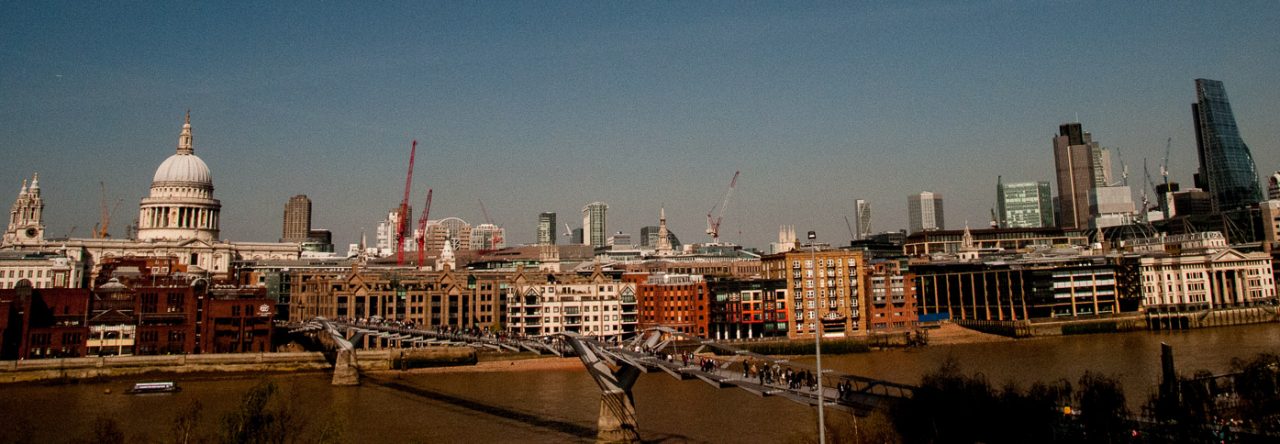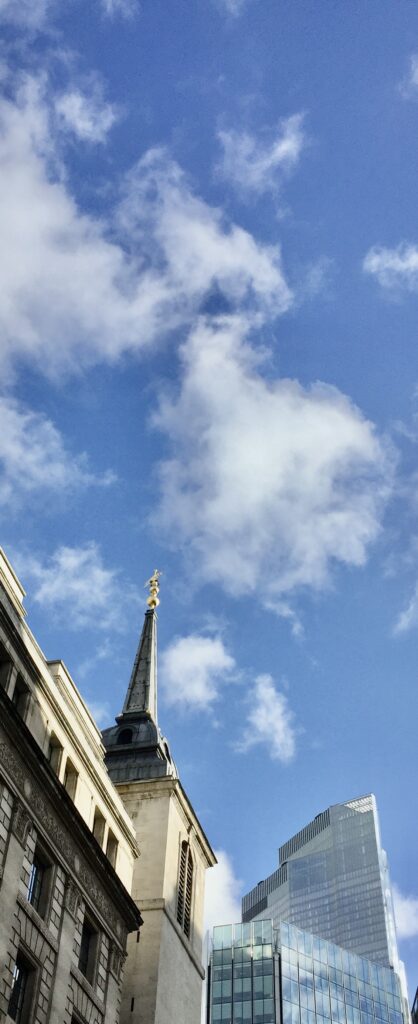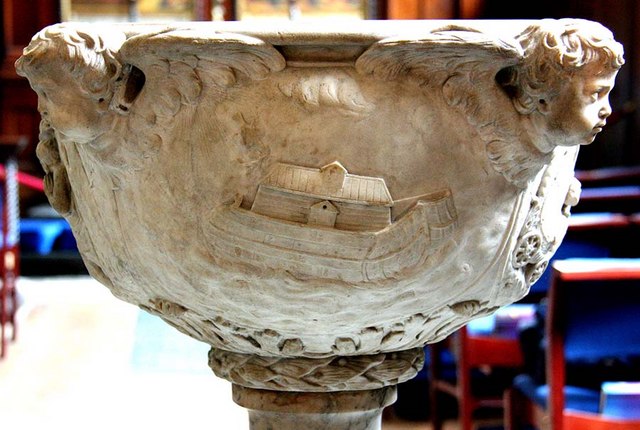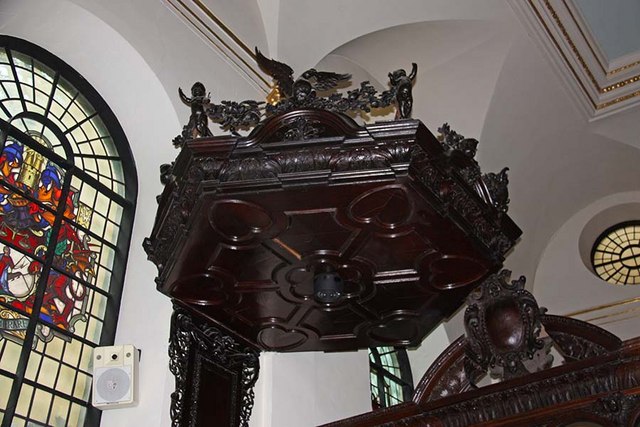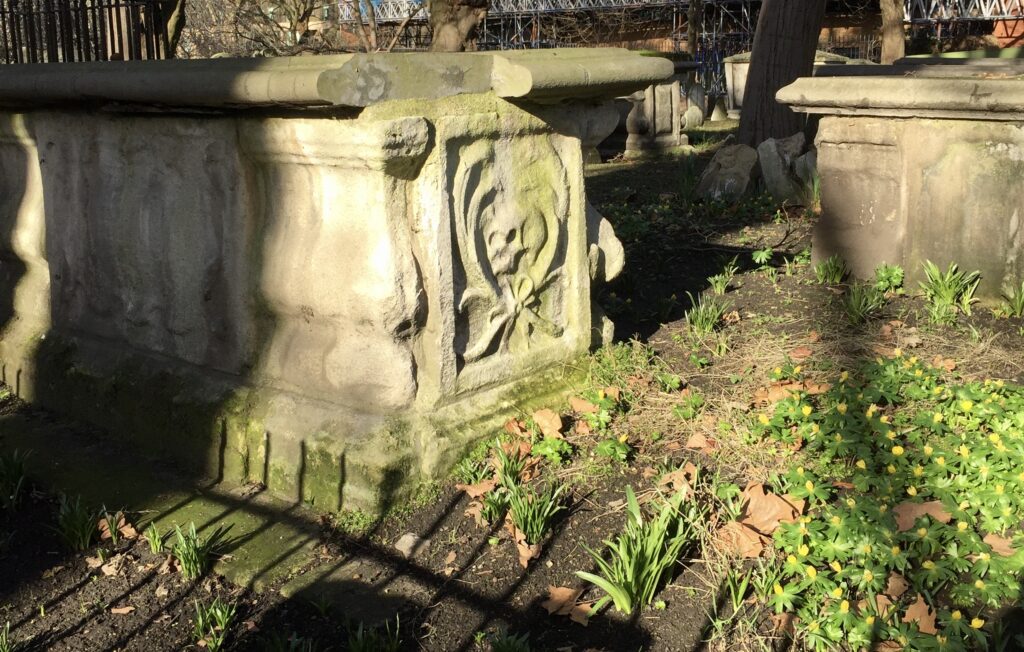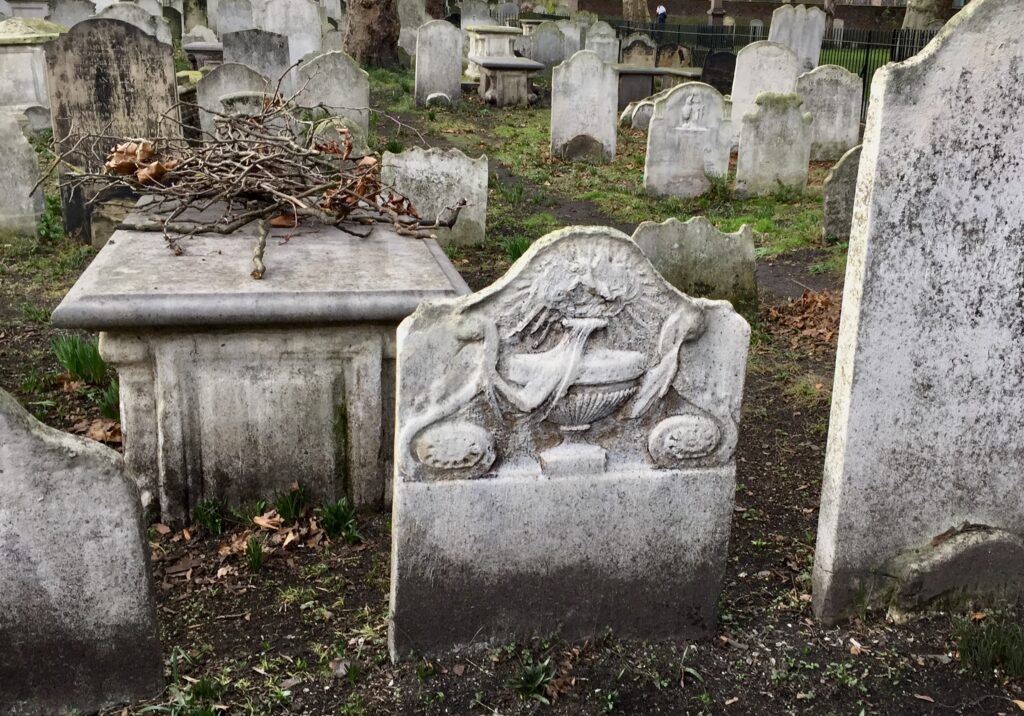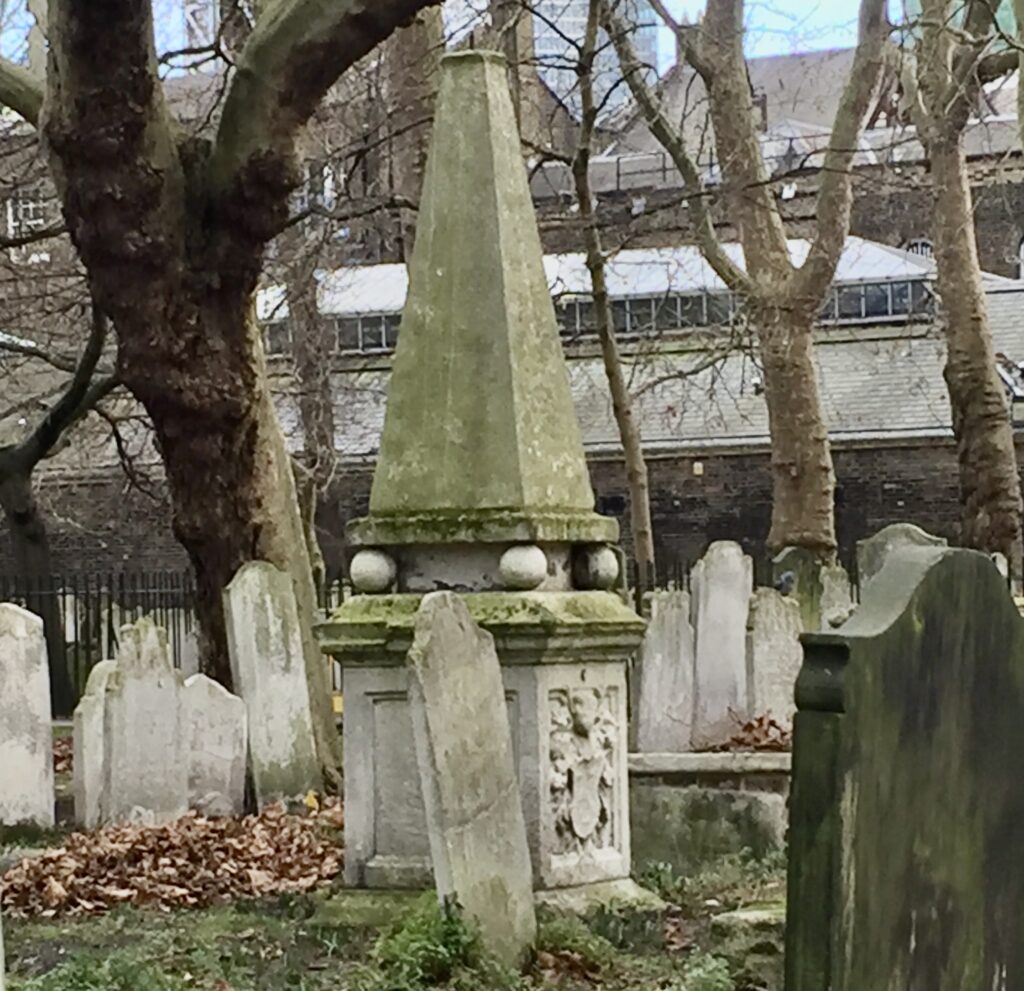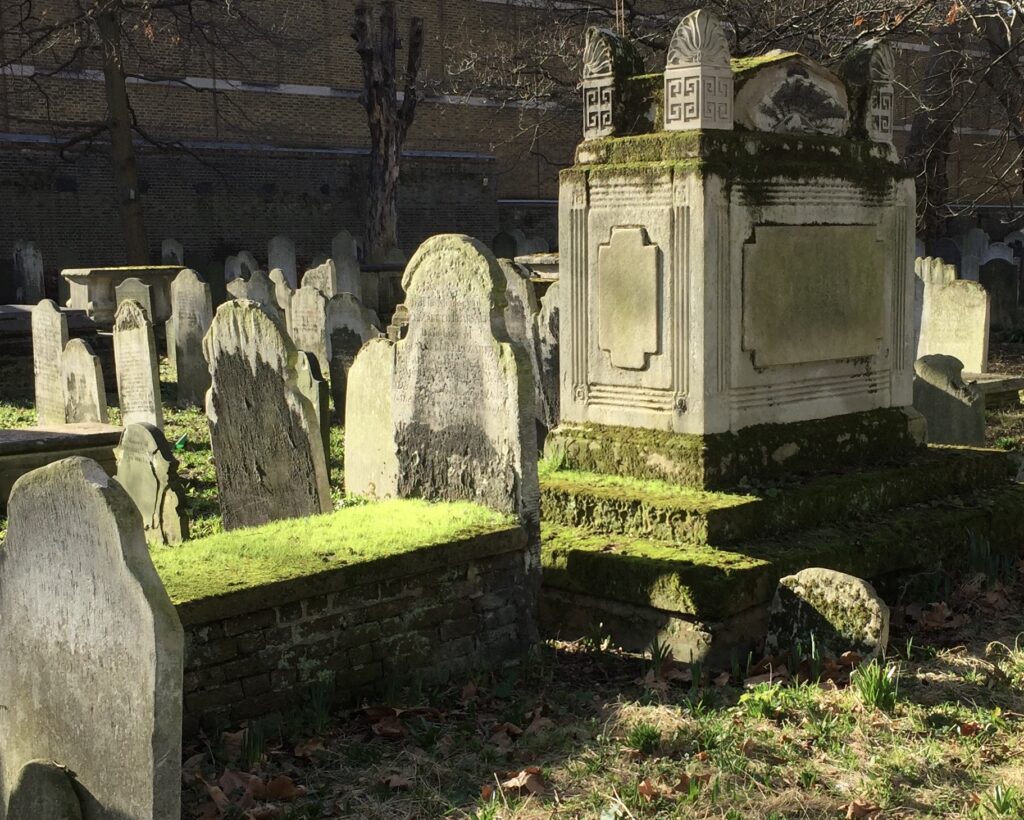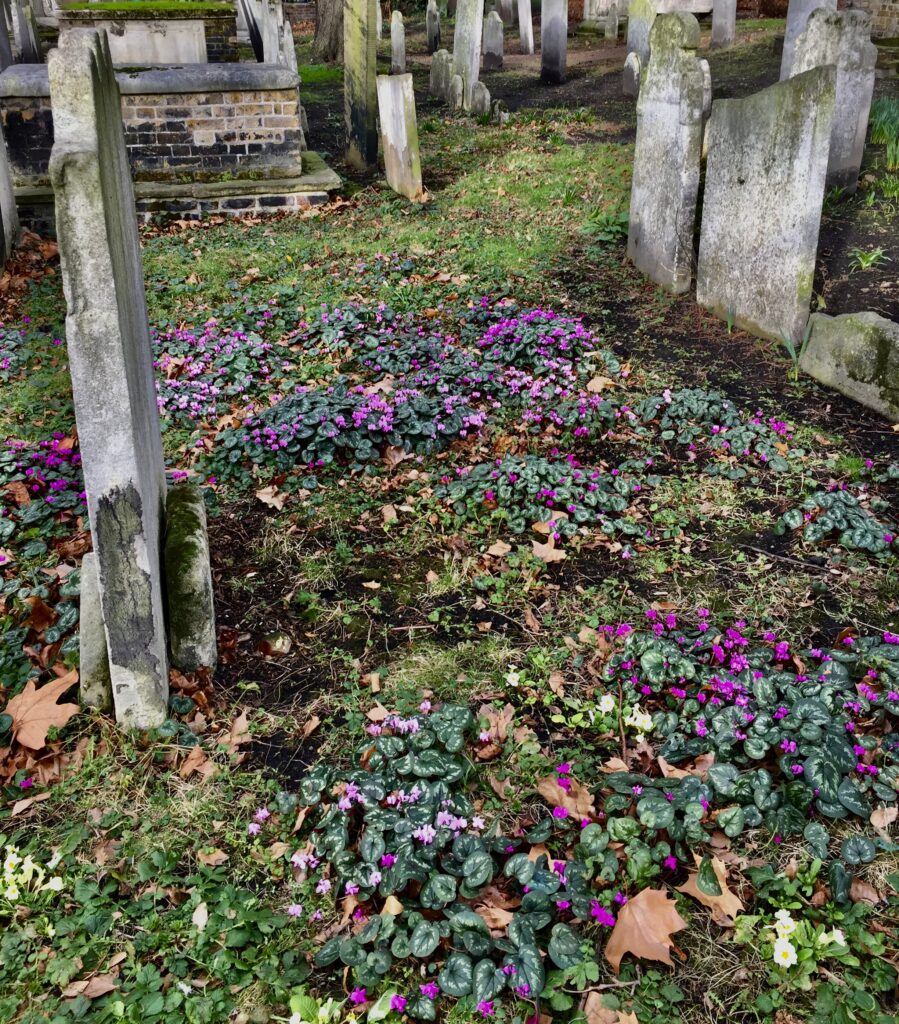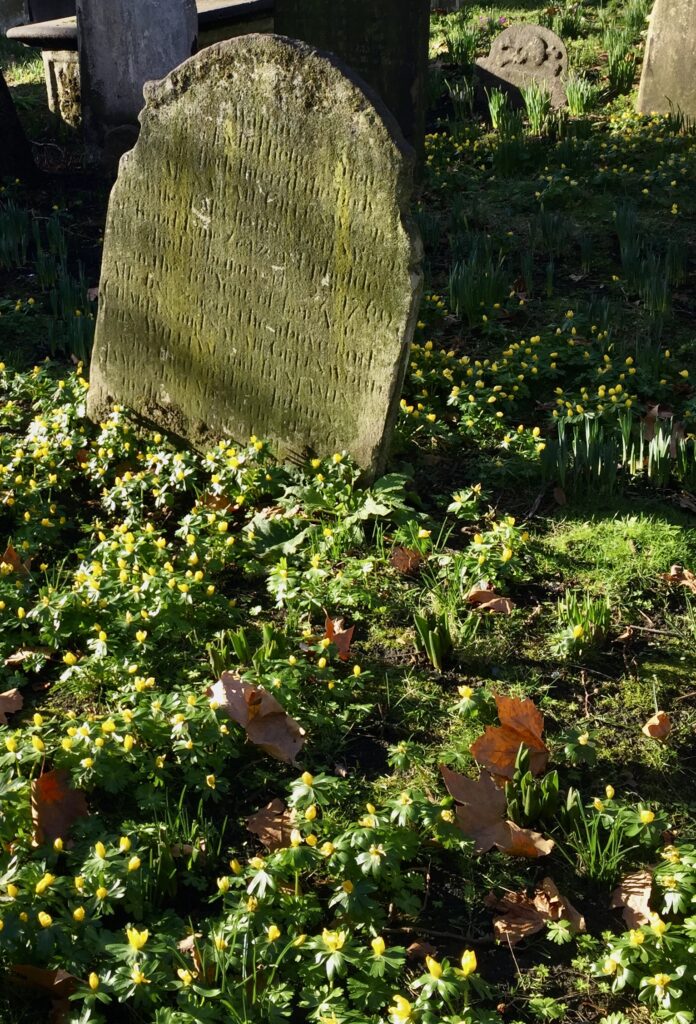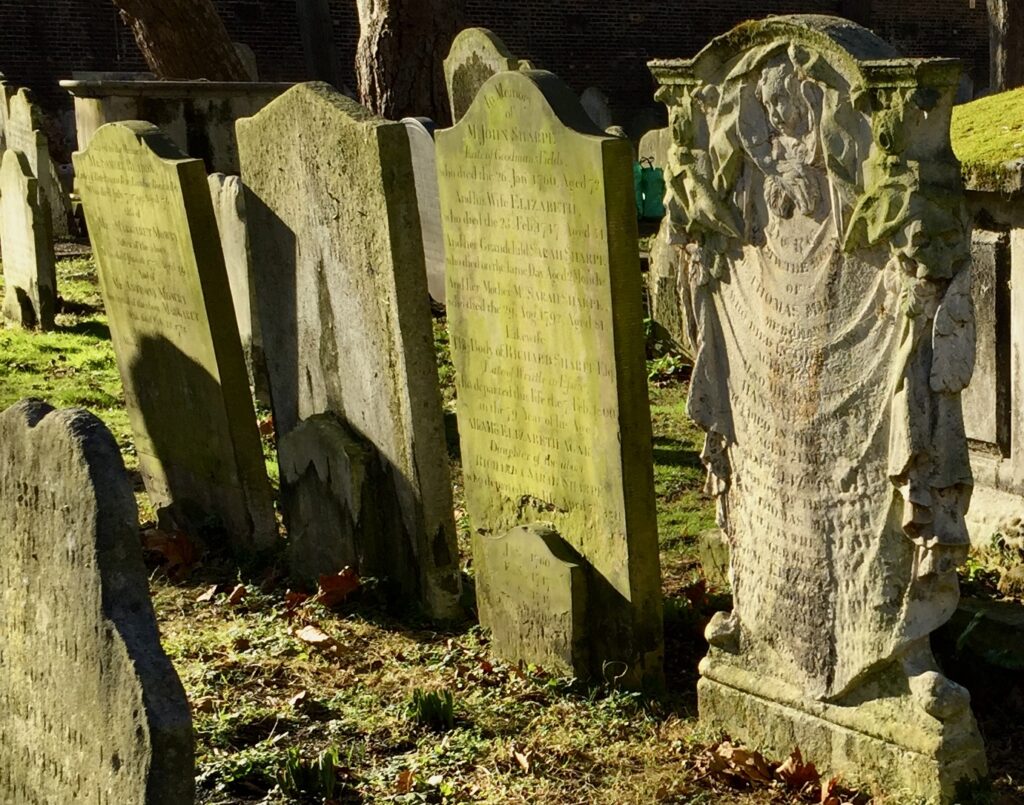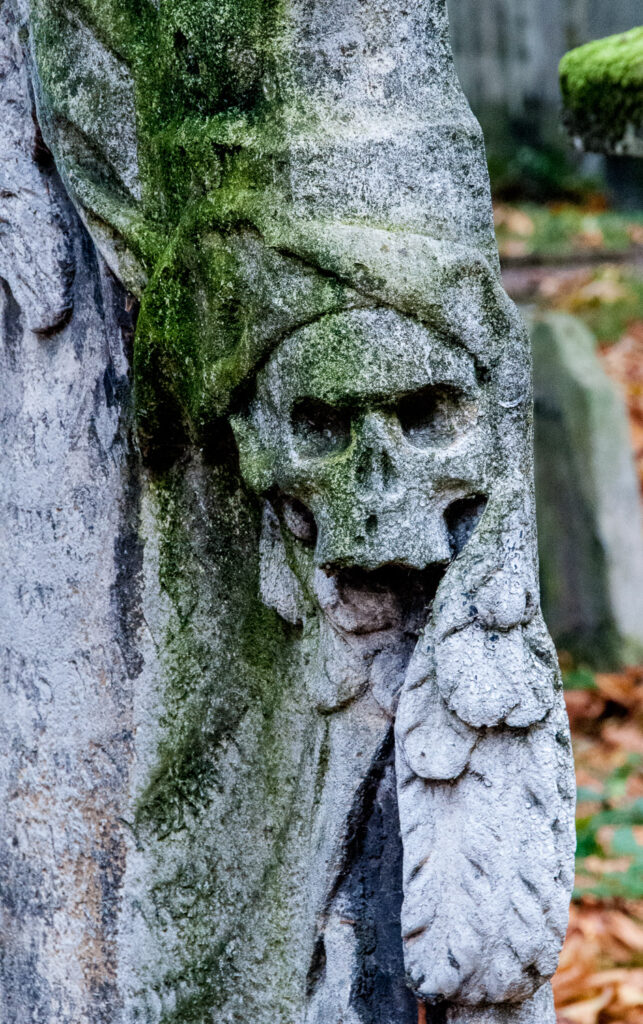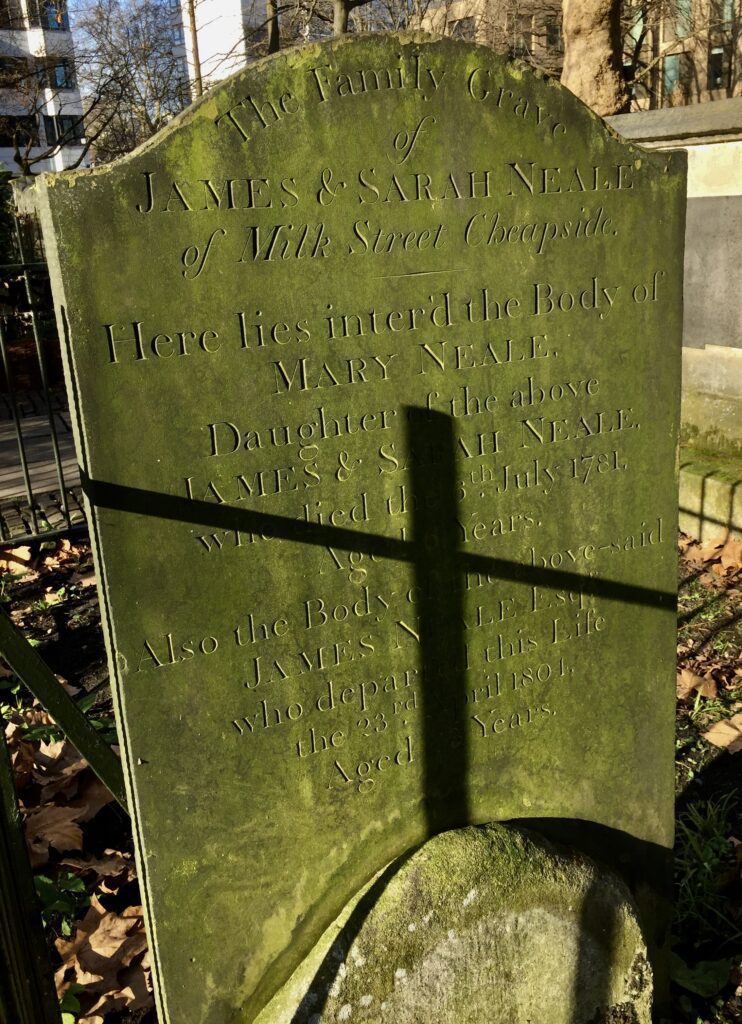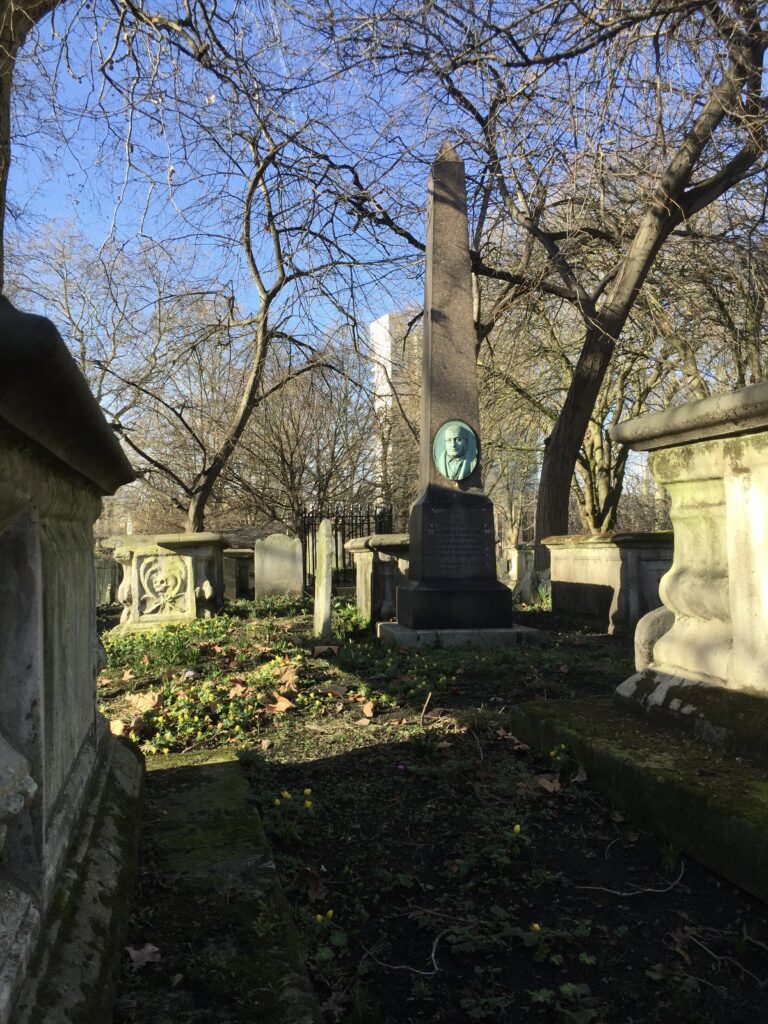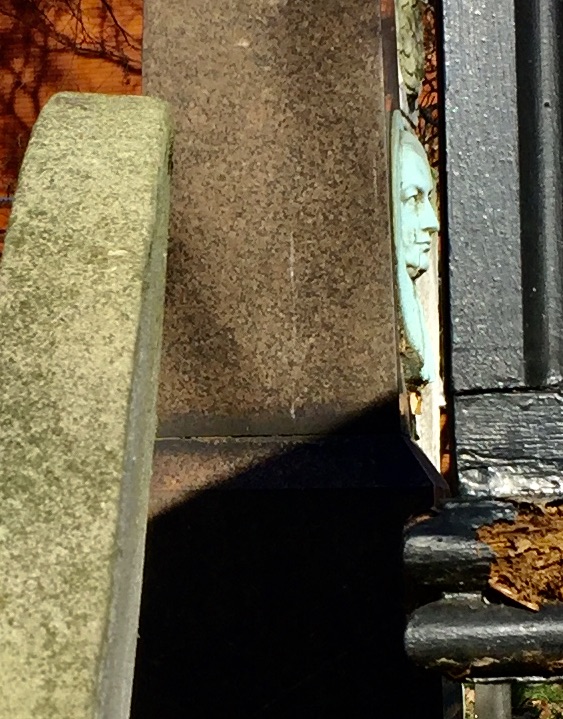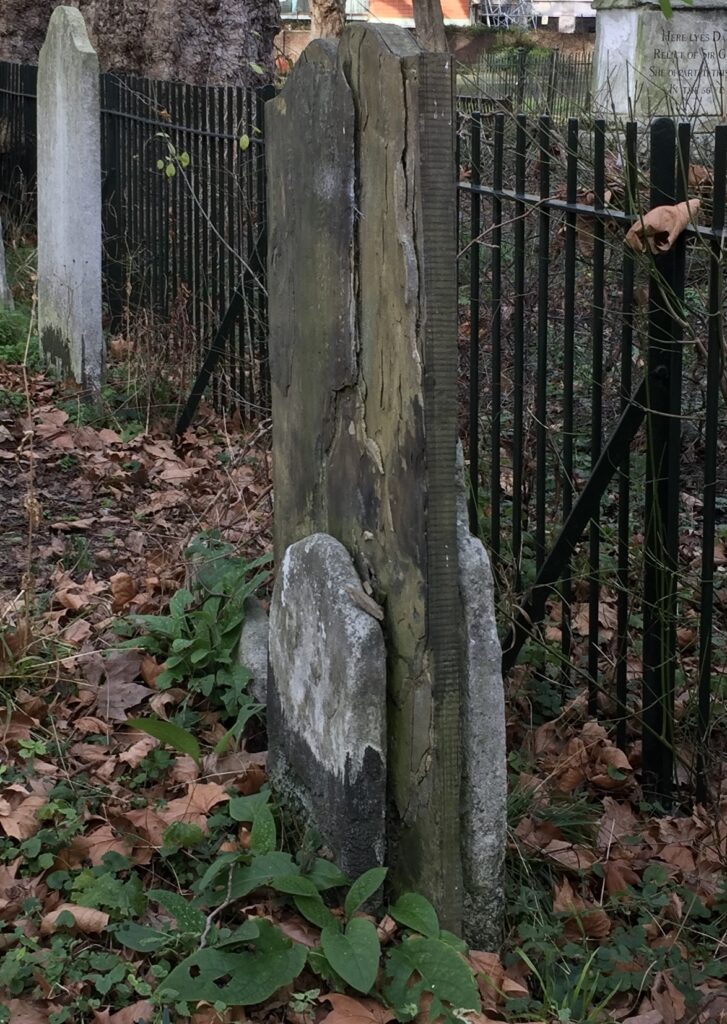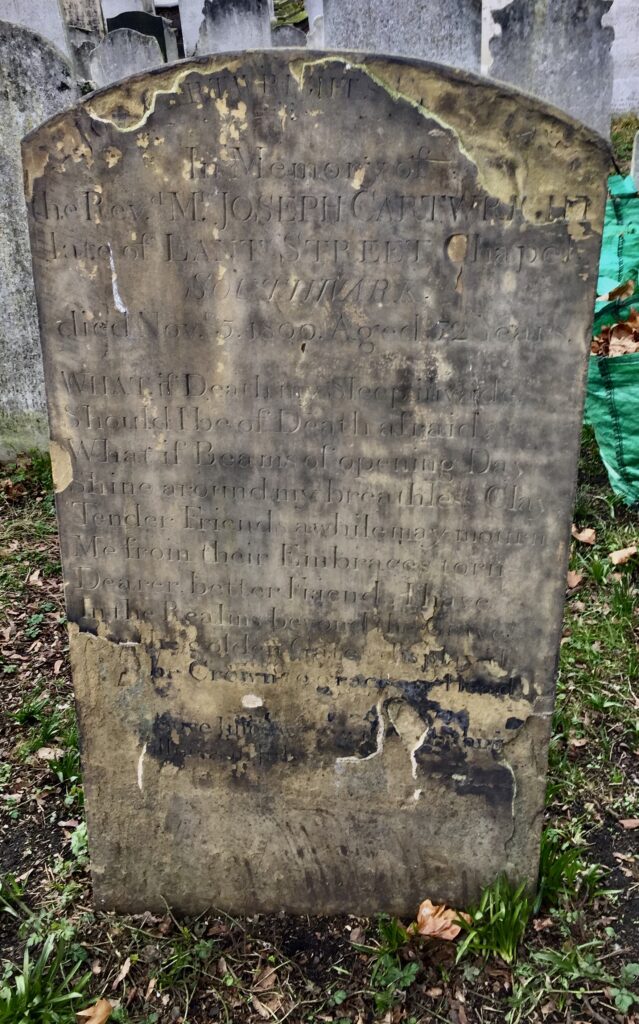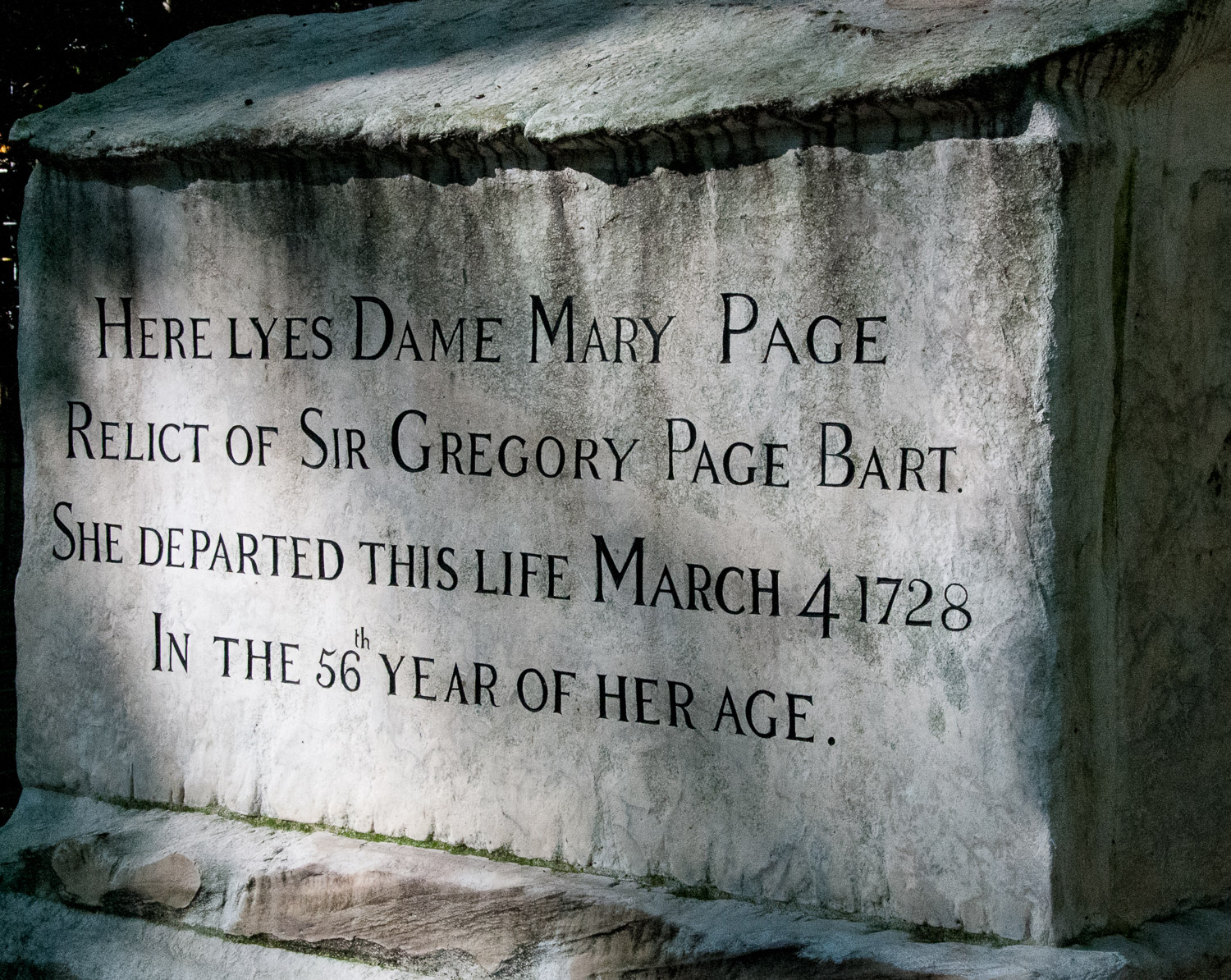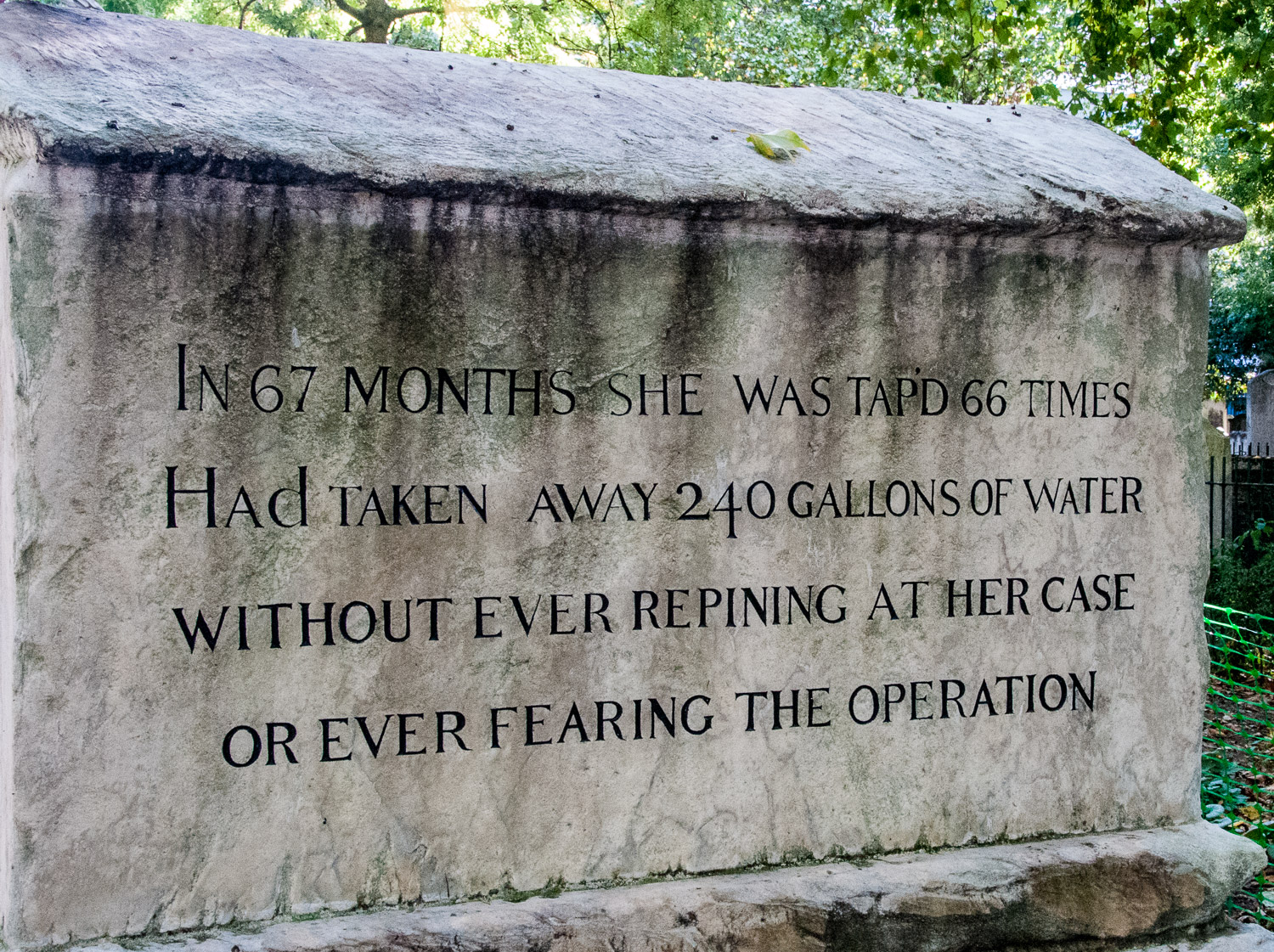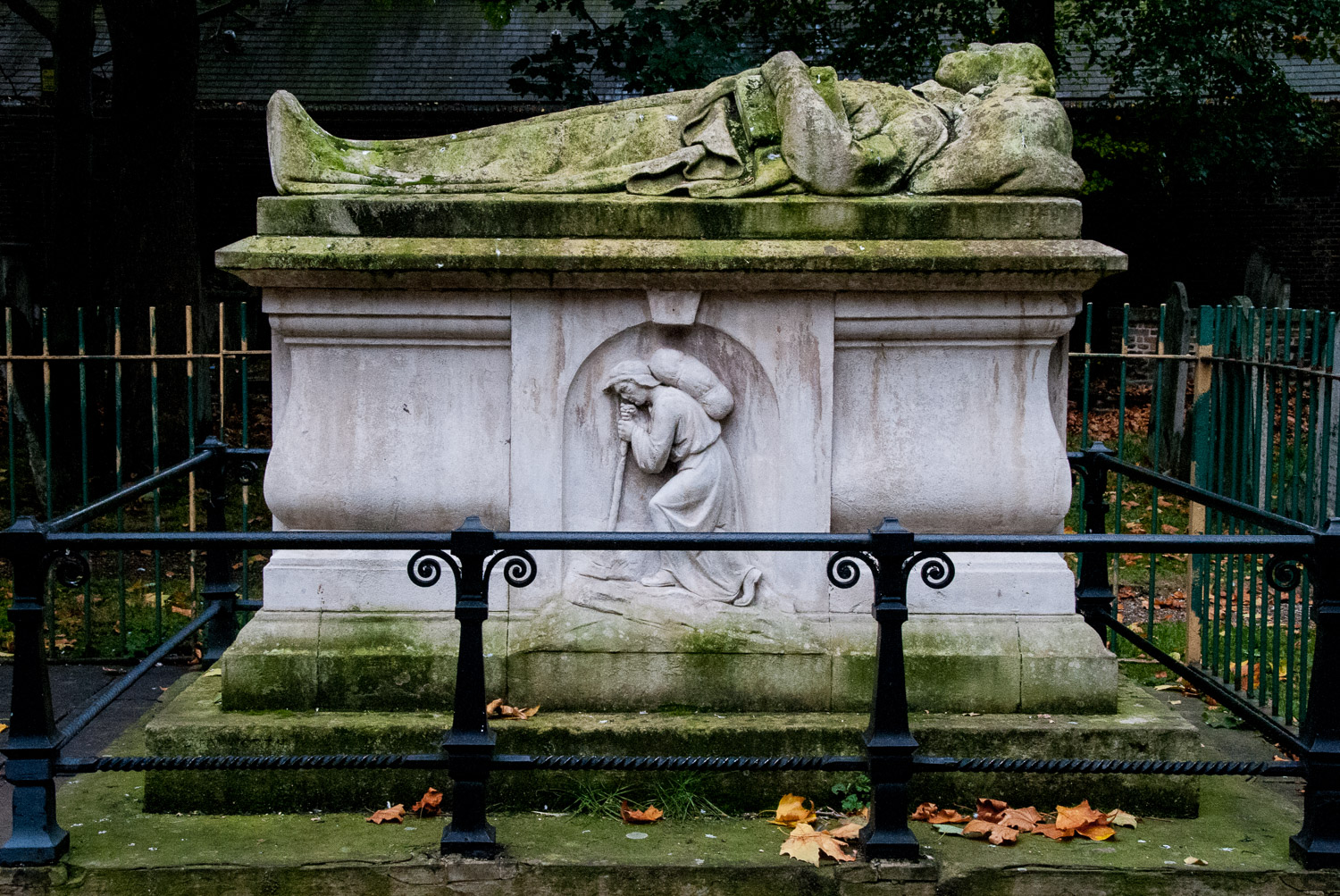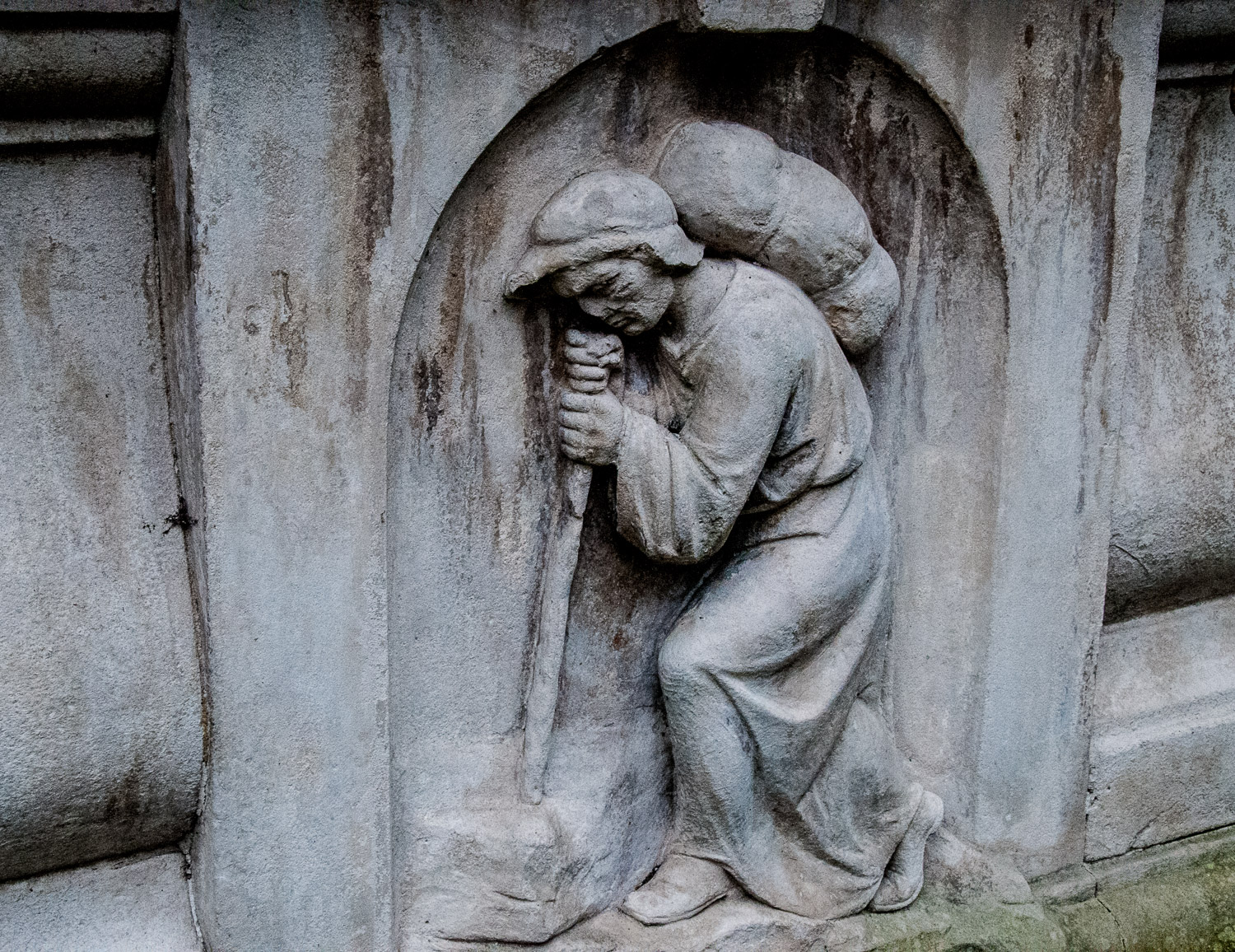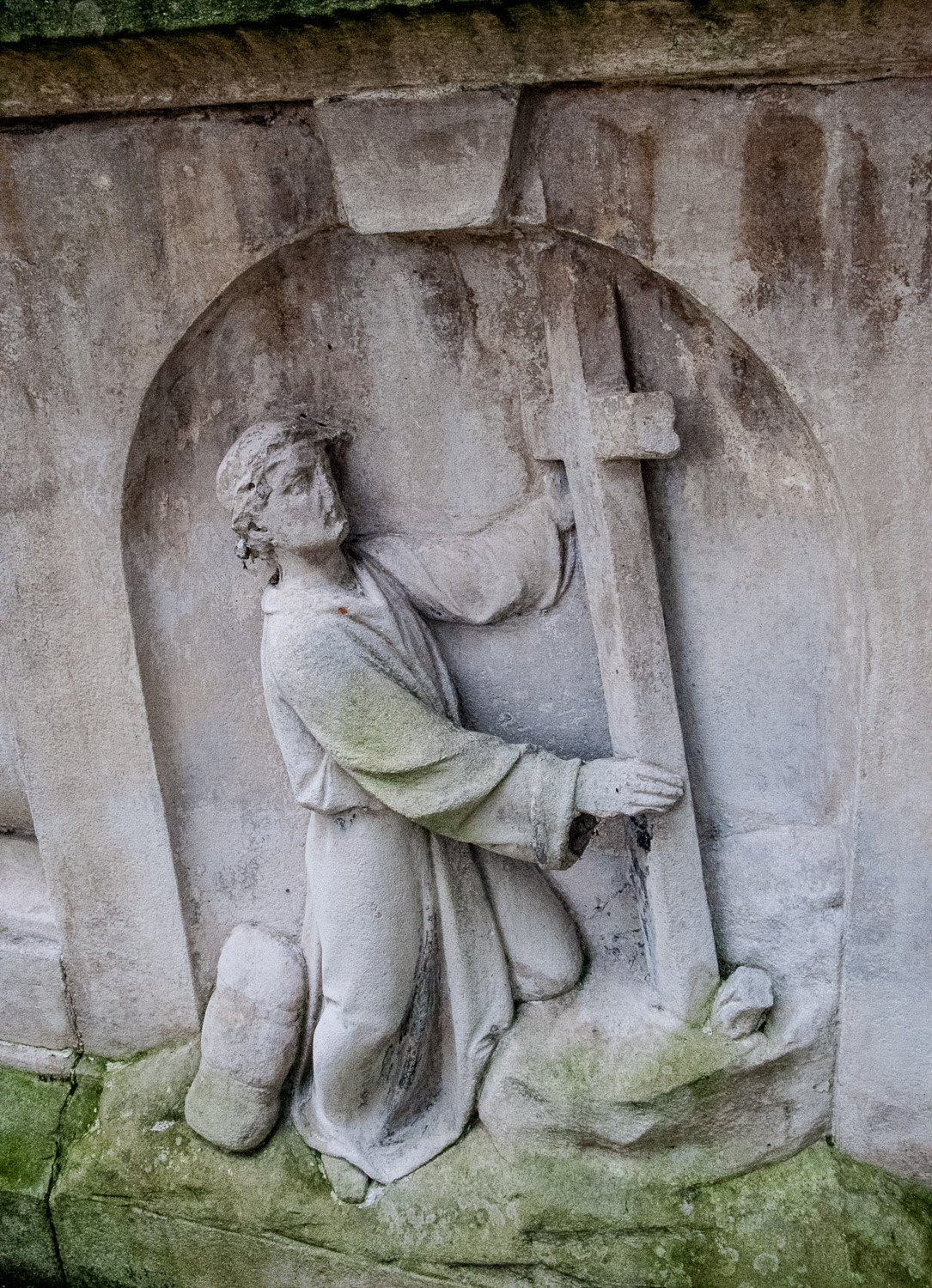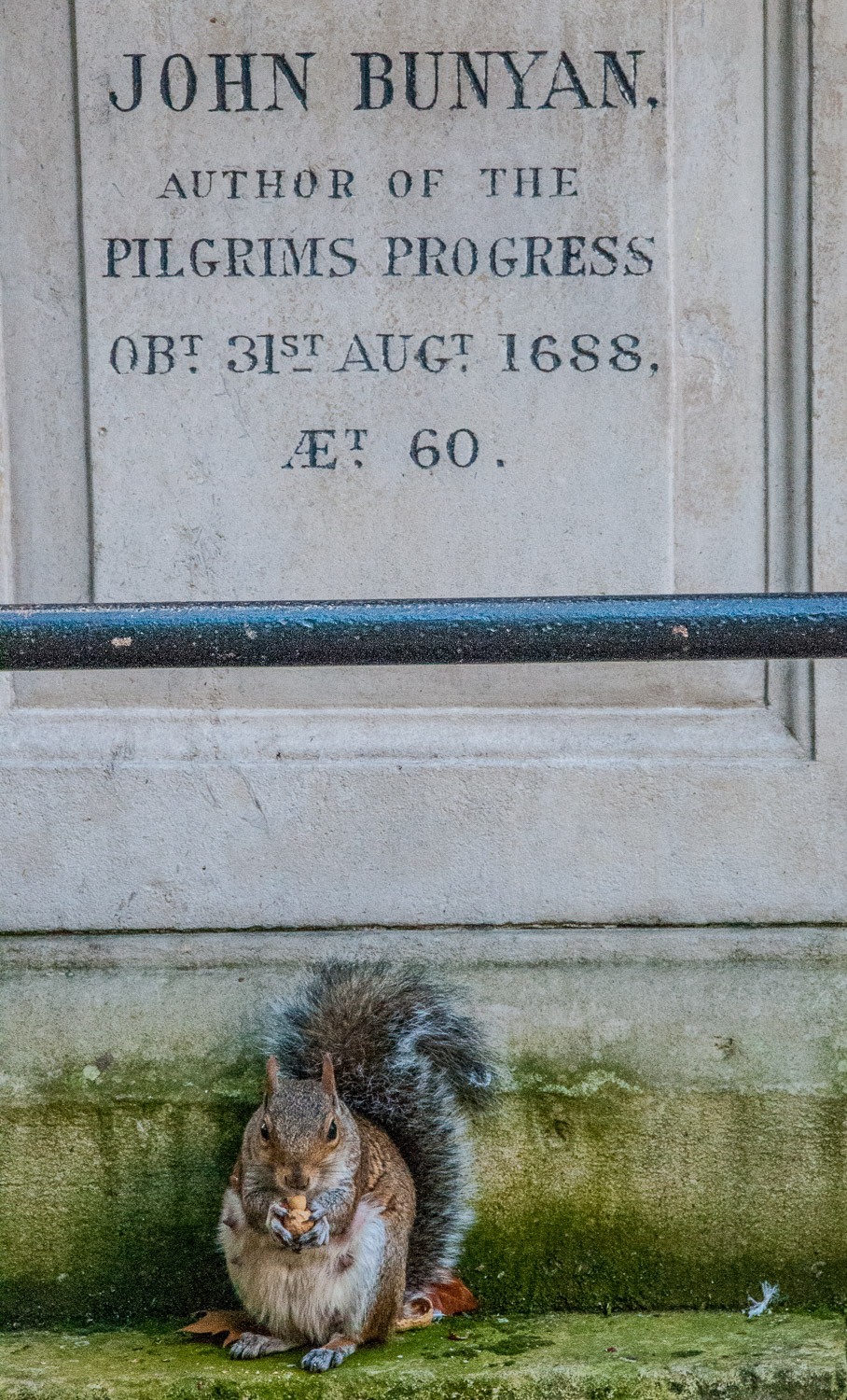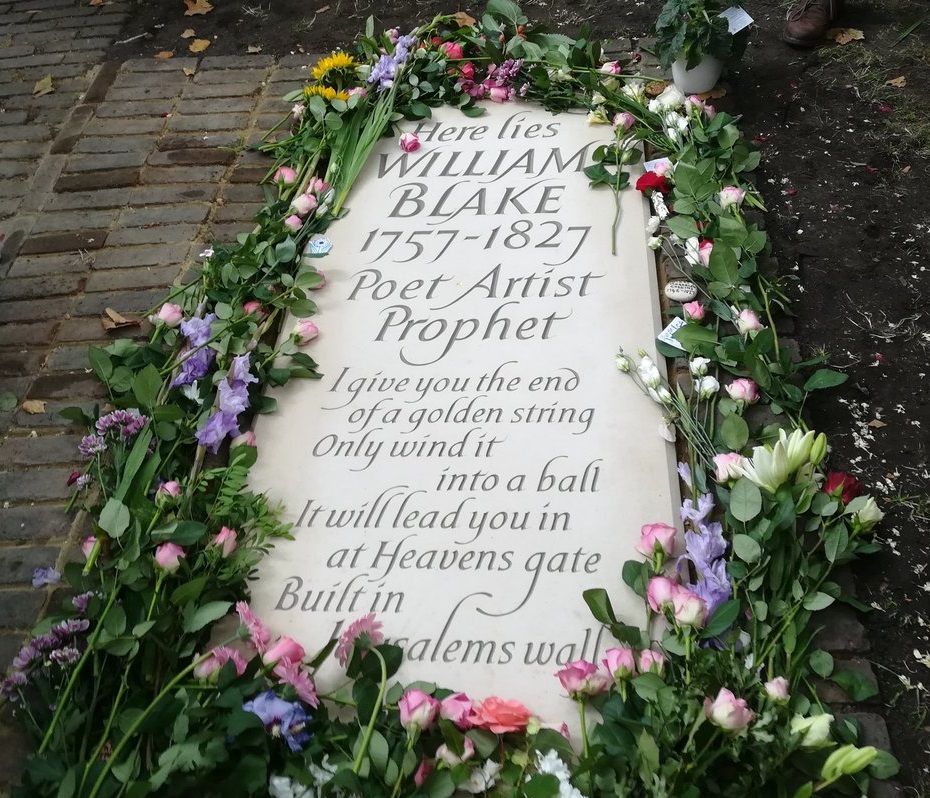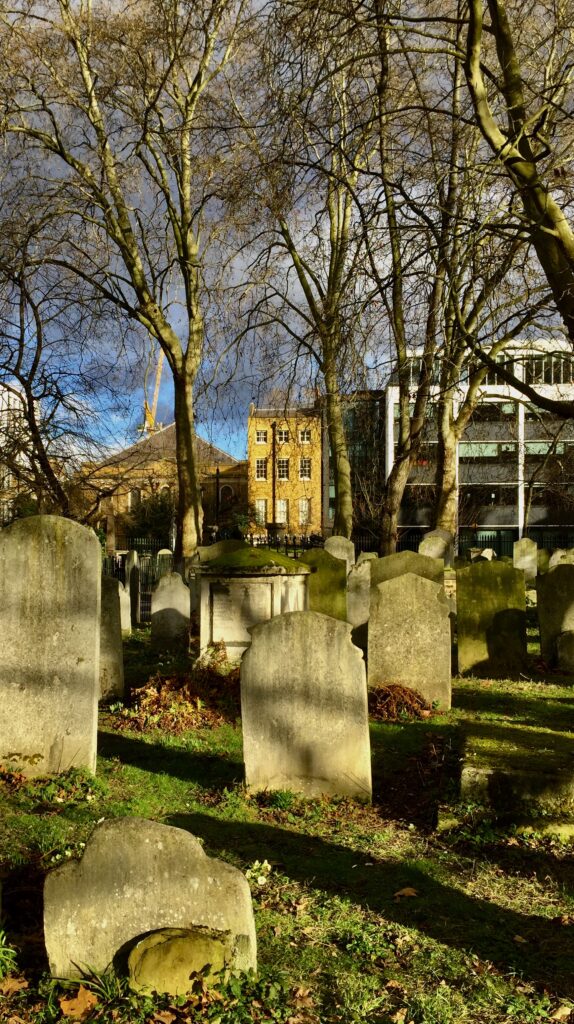I’ve already written in some detail about the church of St Dunstan-in-the-West so I thought it would be good, given last week’s lovely weather, to visit the ruins of St Dunstan-in-the-East. Dunstan (c. 909 – 19 May 988) was an extraordinary man being successively Abbot of Glastonbury Abbey, Bishop of Worcester, Bishop of London and Archbishop of Canterbury. It’s not surprising, therefore, that in Greater London there are seven churches dedicated to him as well as seventeen roads and three educational establishments.
His work restored monastic life in England and reformed the English Church. His 11th-century biographer states that Dunstan was skilled in ‘making a picture and forming letters’, as were other clergy of his age who reached senior rank. At least one example of his work survives …
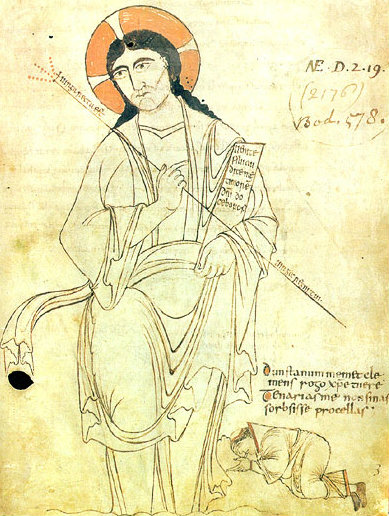
This is from the manuscript known as the Glastonbury Classbook. It’s a portrait of Christ, and the monk kneeling beside him may be a self-portrait of Dunstan.
He served as an important minister of state to several English kings and was the most popular saint in England for nearly two centuries, having gained fame for the many stories of his greatness, not least among which were those concerning his famed cunning in defeating the Devil by grabbing his nose in a pair of hot tongs …
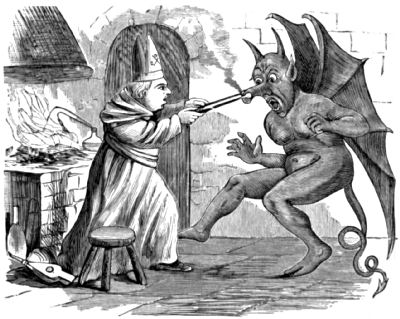
If you want to read even more about St Dunstan I highly recommend The Clerk of Oxford blog.
And so to the remains of the church named after him.
The original church (dating from around 1100) was severely damaged in the Great Fire of 1666 after which it was patched up and a steeple with a needle spire added, to the design of Sir Christopher Wren, between 1695 and 1701. In 1817, structural problems were identified and these led to the church being demolished. Wren’s tower was considered safe and was retained and incorporated into the new building which was completed in 1821.
Here’s St Dunstan’s in 1910 …
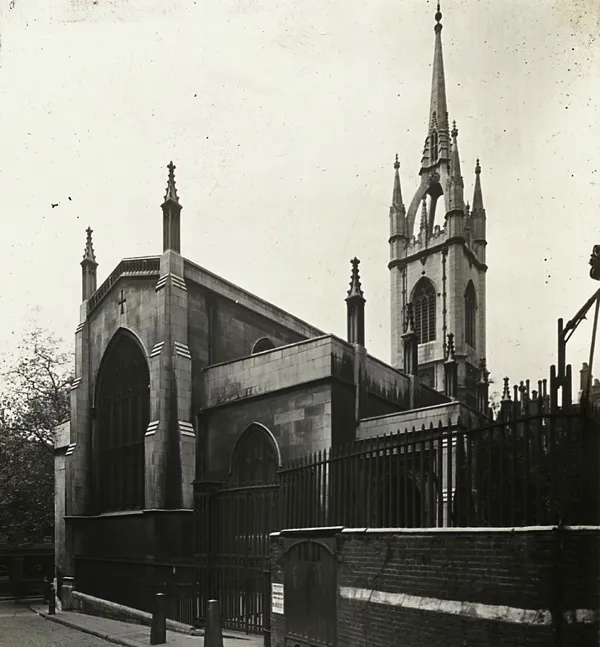
The church was partly destroyed in the Blitz of 1941. Wren’s tower and steeple survived the bombs’ impact but of the rest of the church only the north and south walls remained …
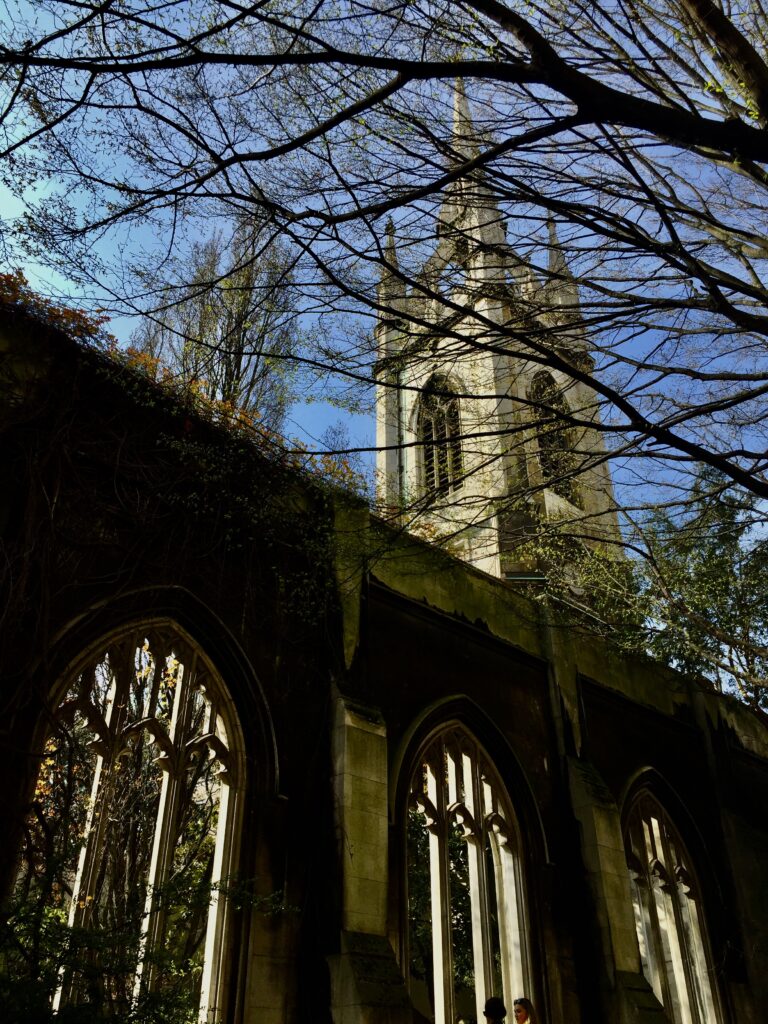
Following the War it was decided not to rebuild St Dunstan’s and in 1967 the City of London Corporation chose to turn the ruins into a public garden which opened in 1971. A lawn and trees were planted in the ruins, with a low fountain in the middle of the nave which is still happily bubbling away …
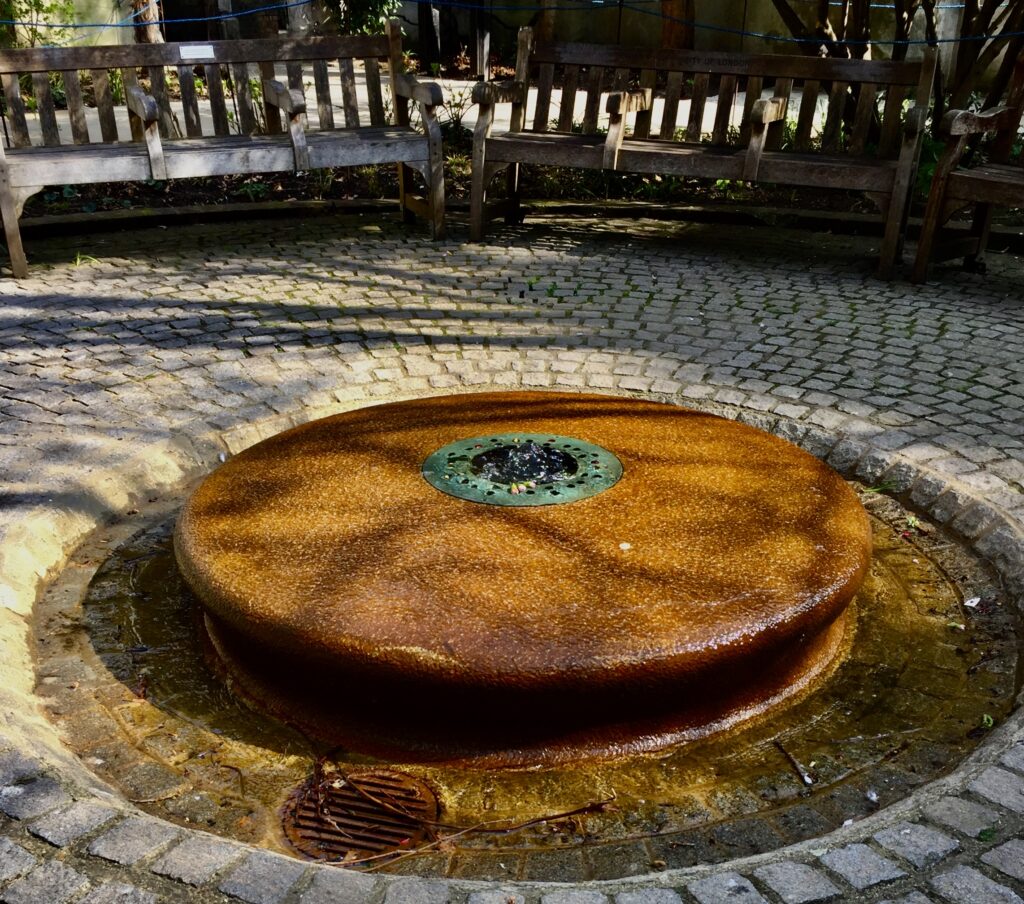
It’s a lovely, serene location to visit. Here are the images I took last Friday when I had the place almost entirely to myself …
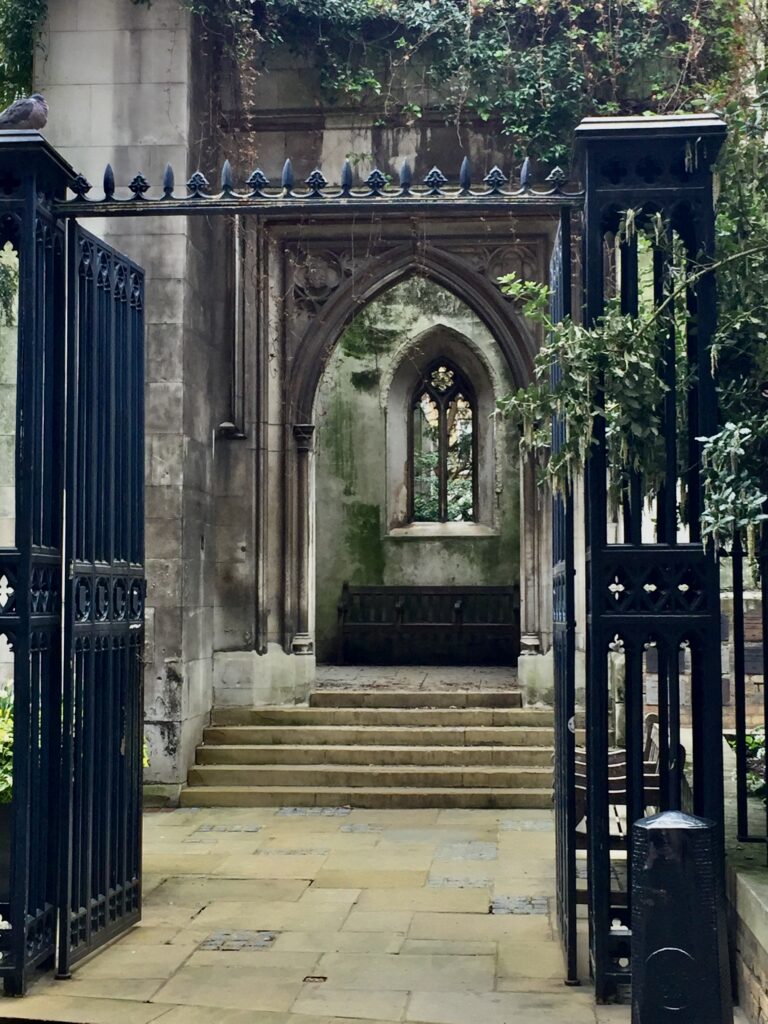
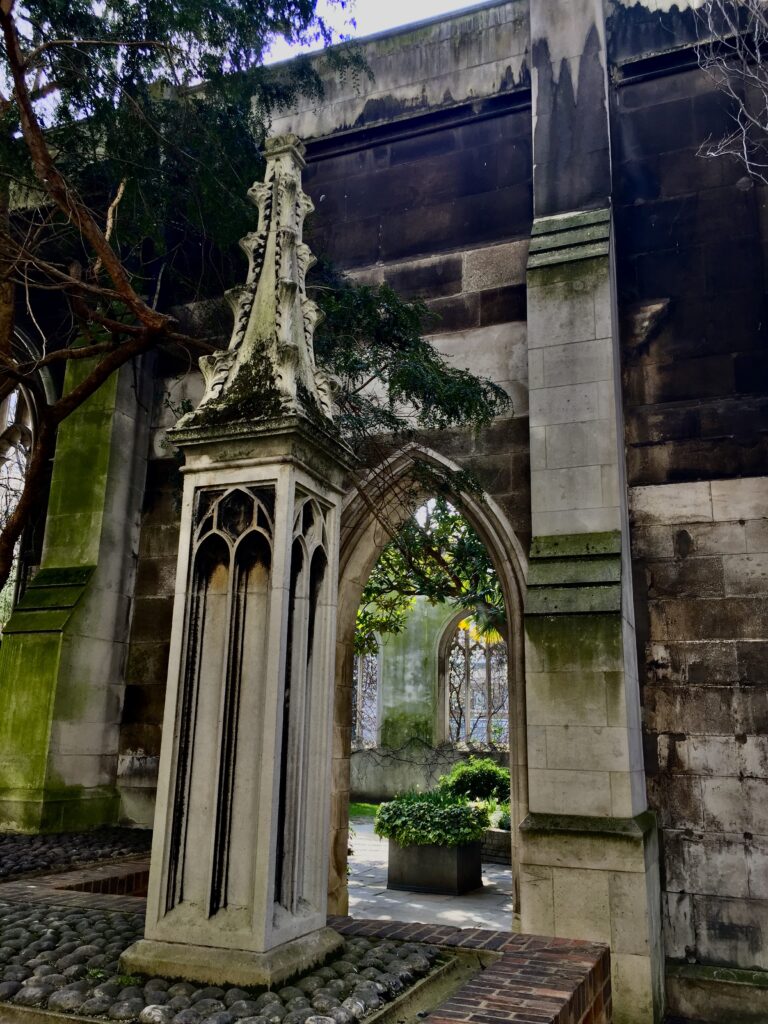
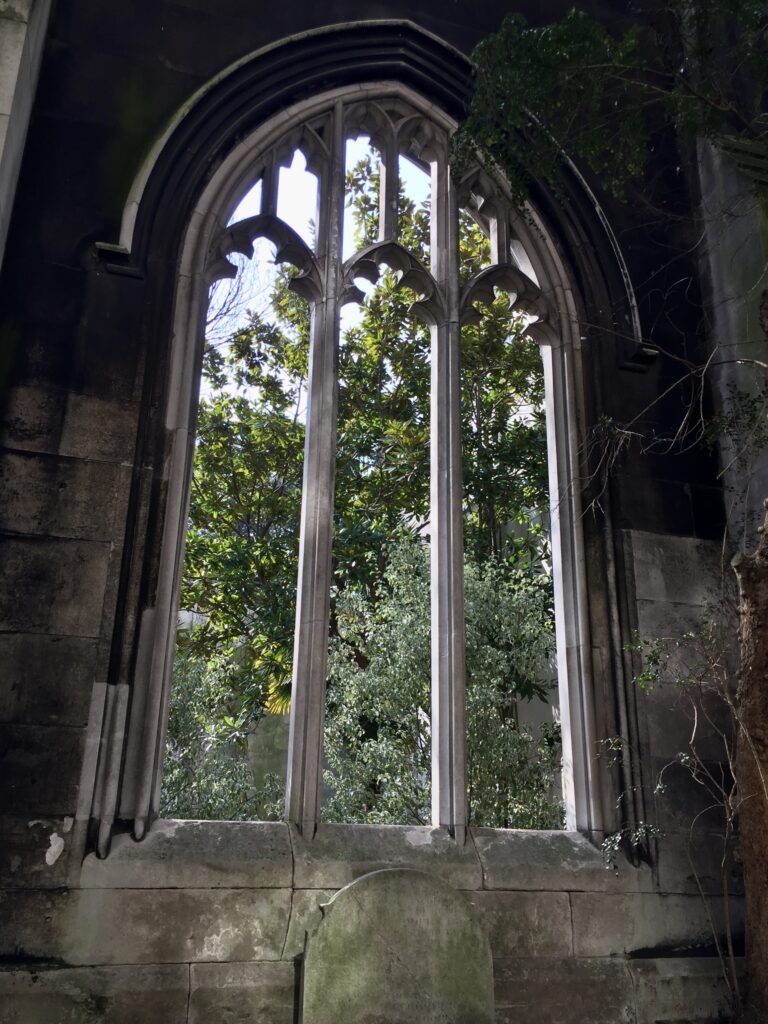
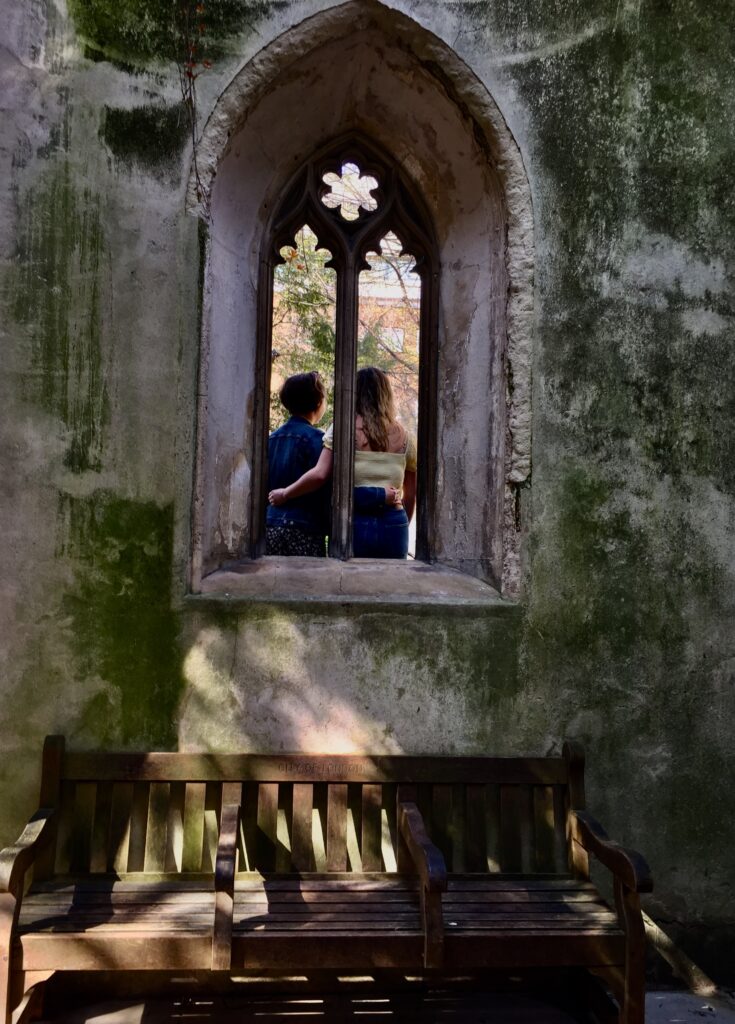
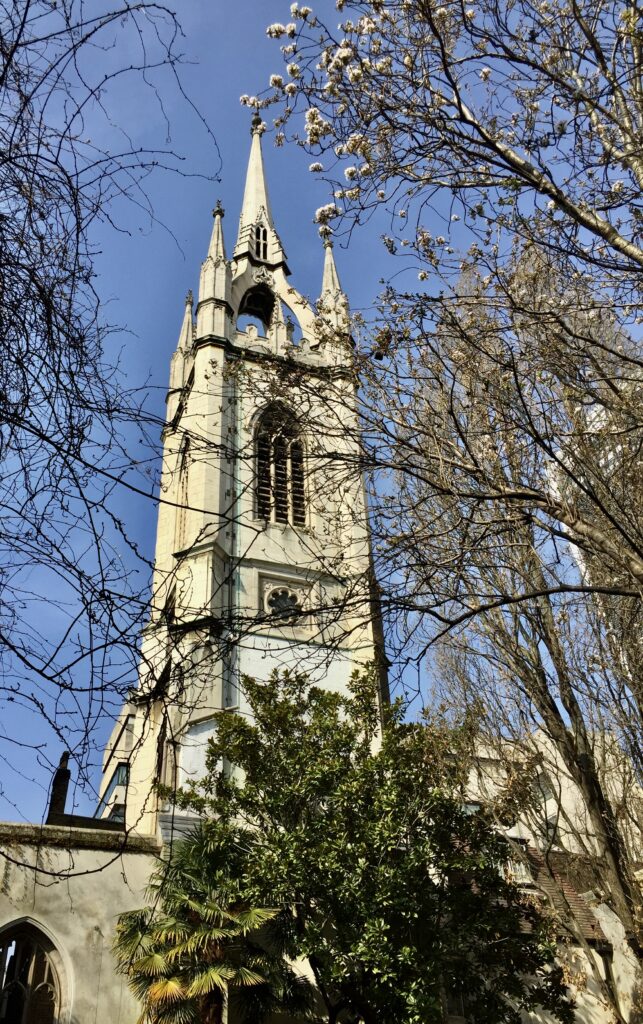
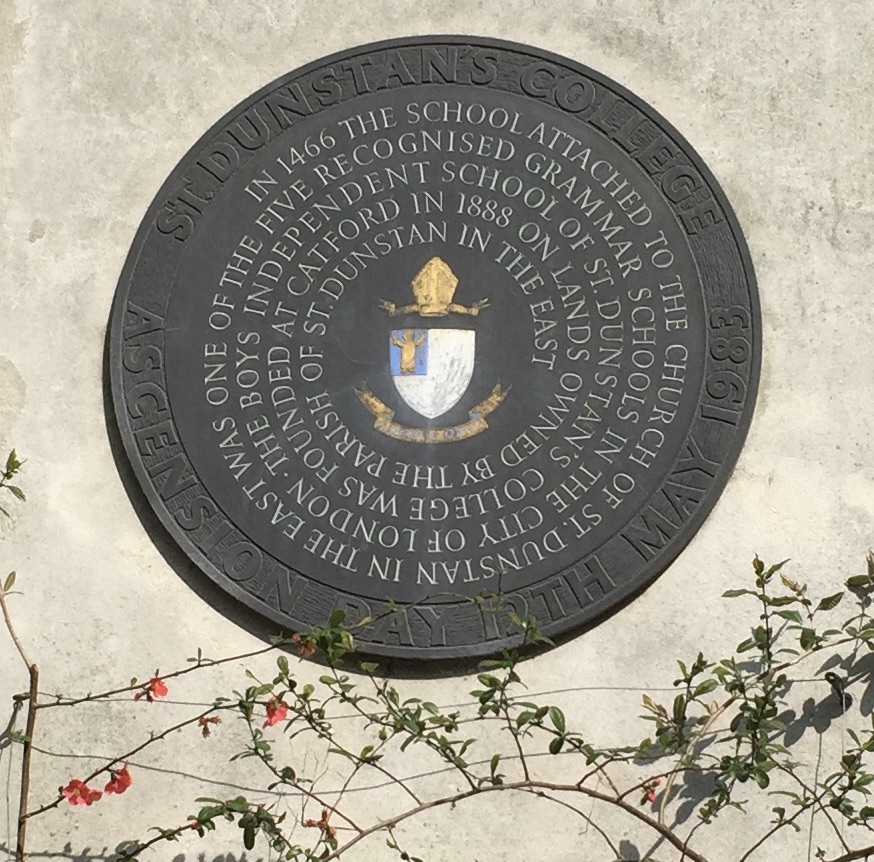
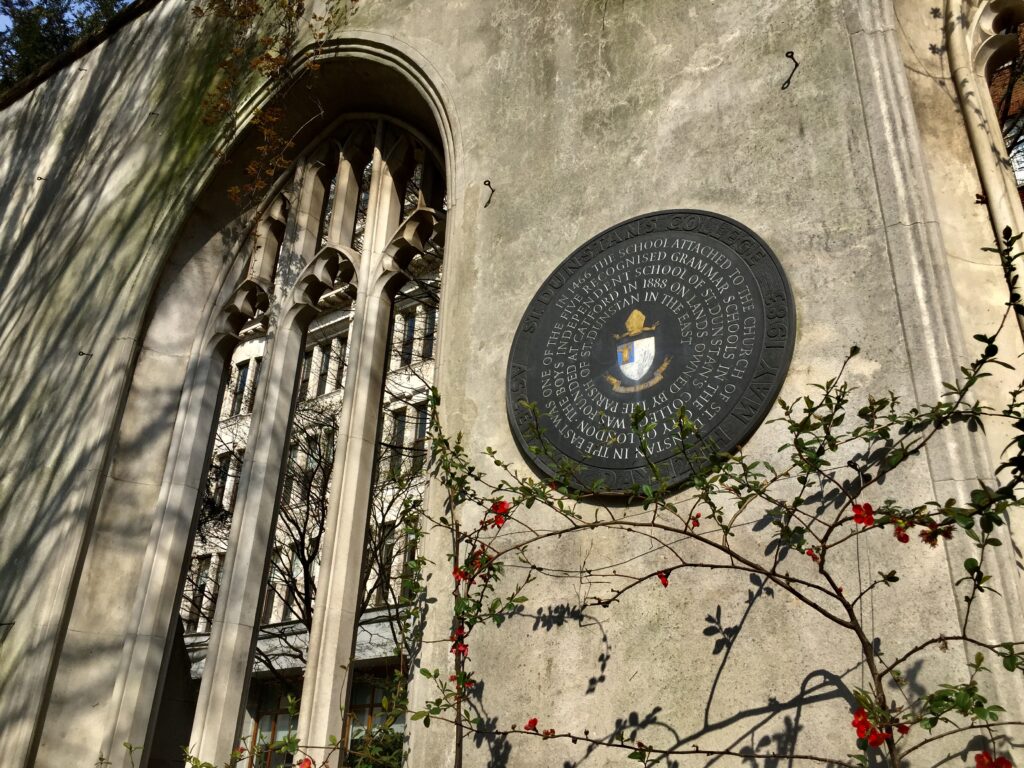
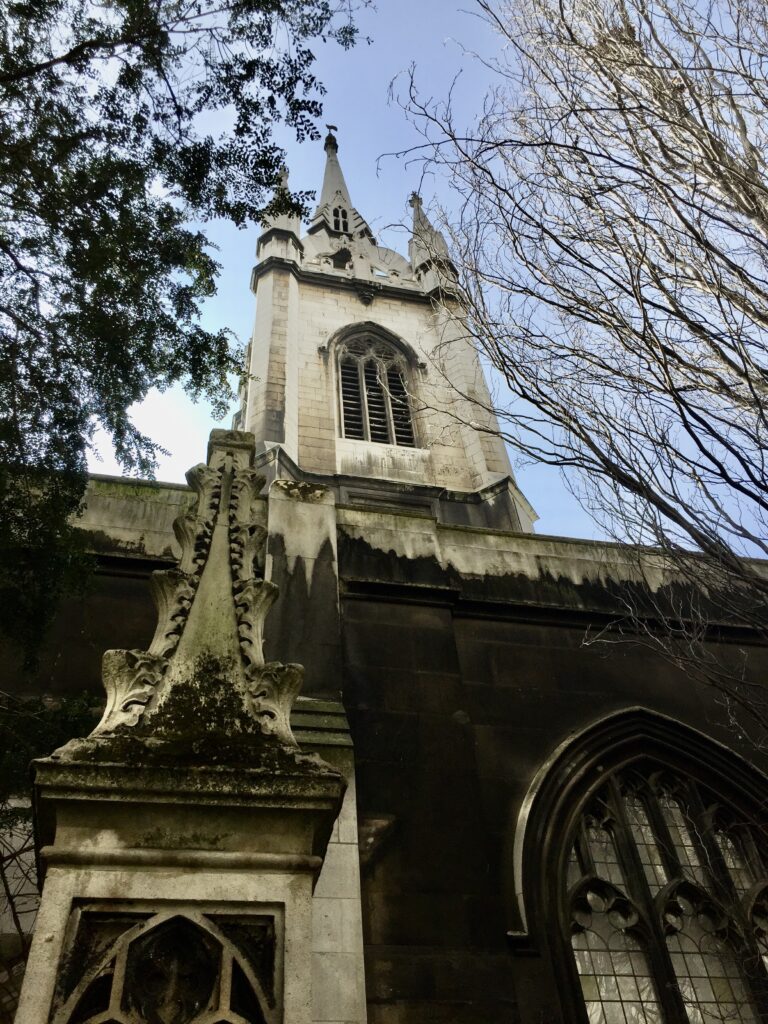
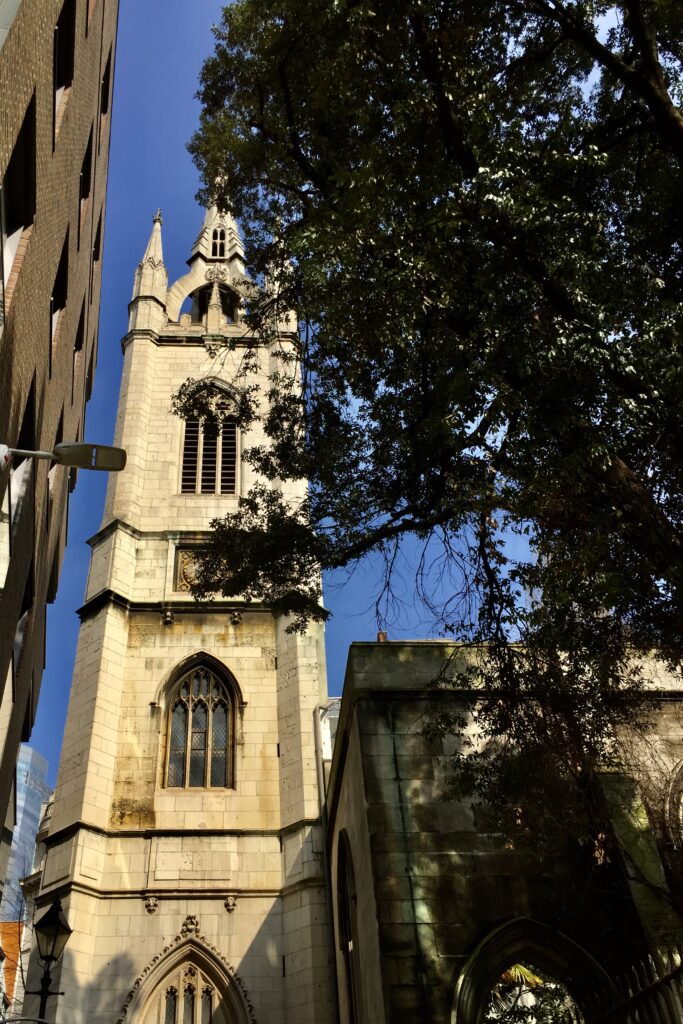
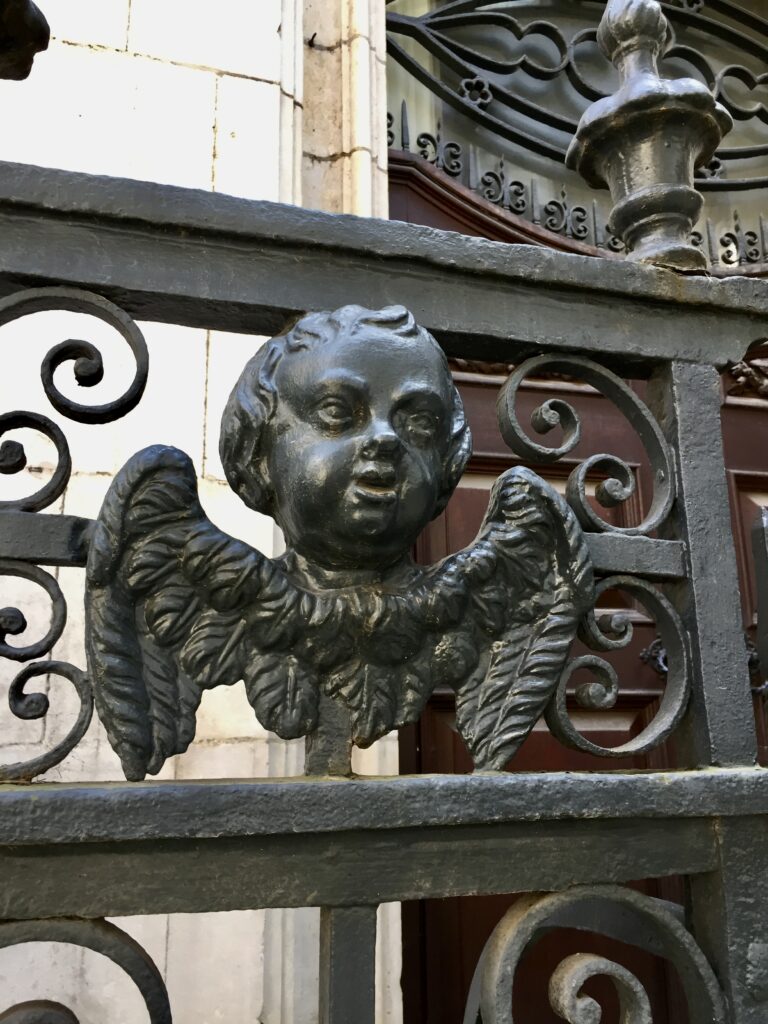
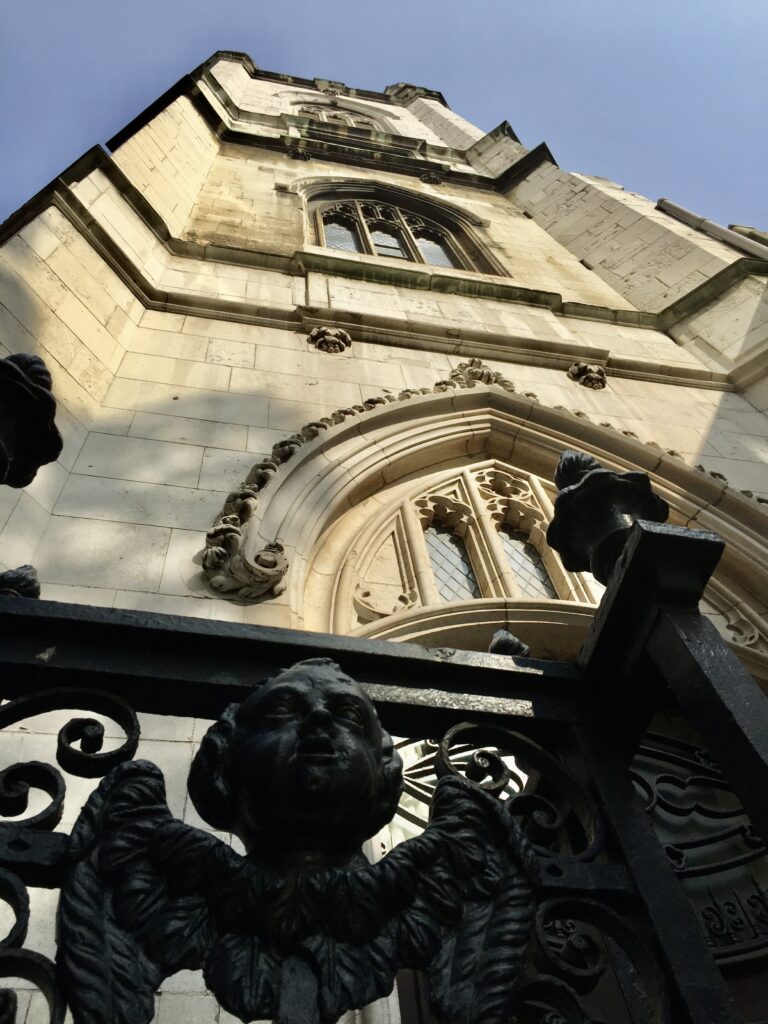
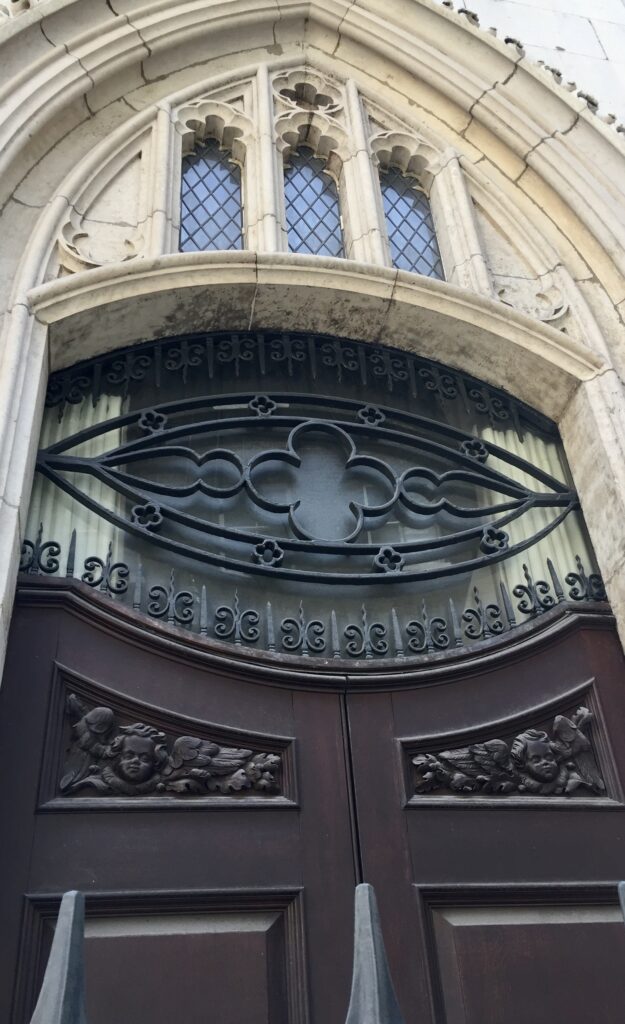
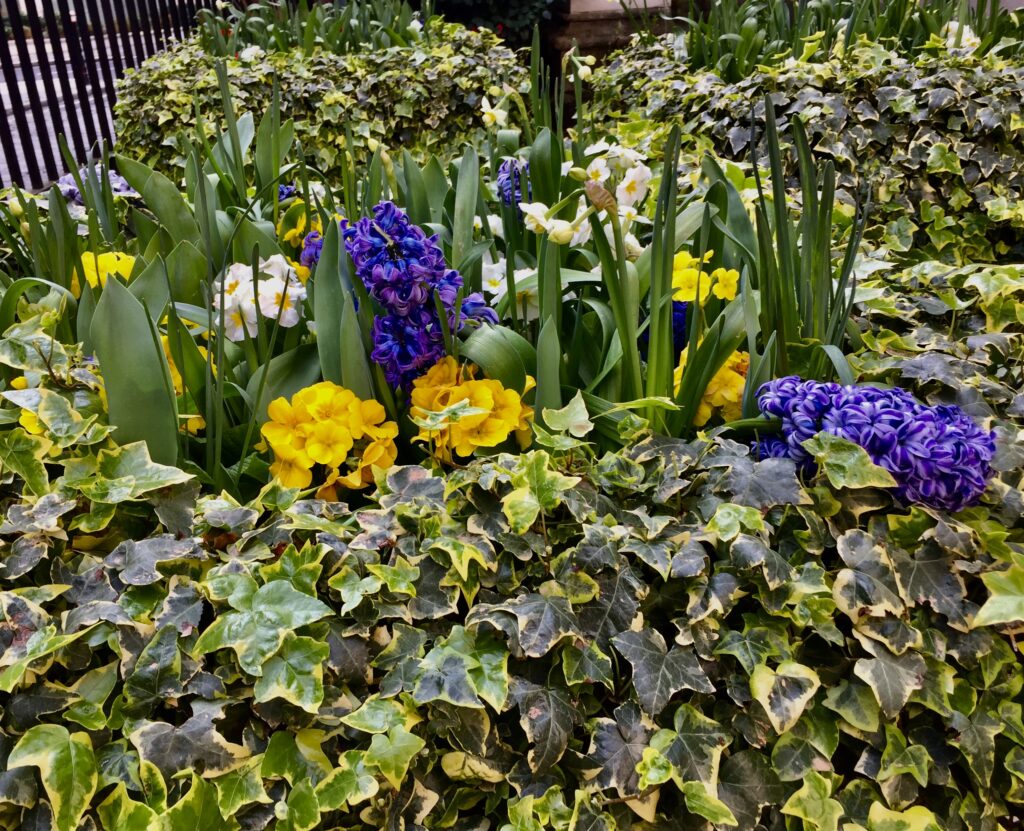
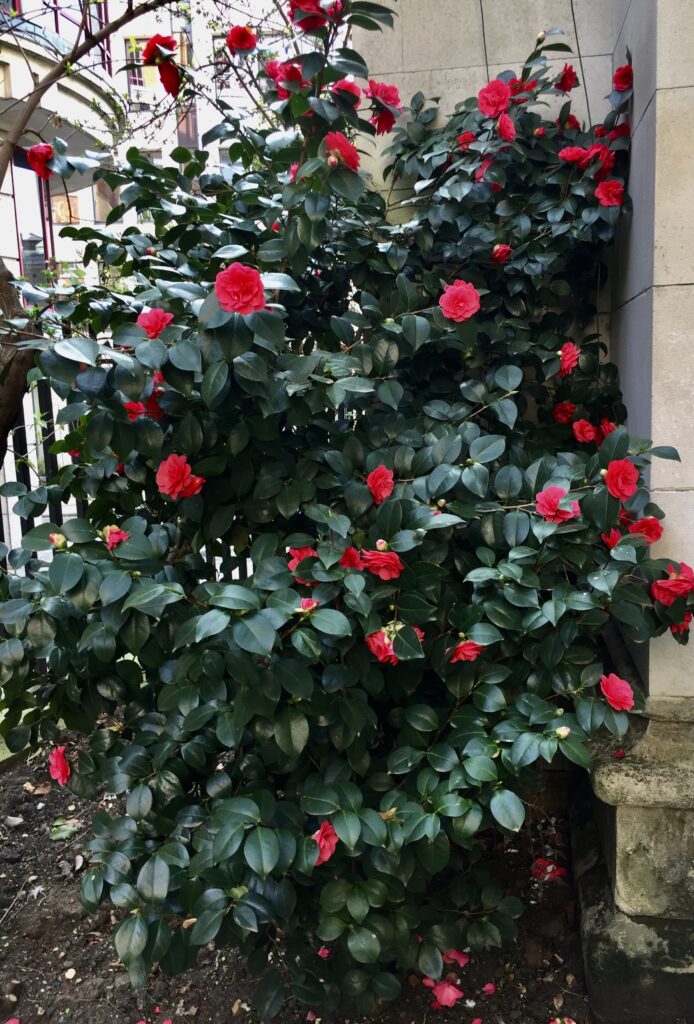
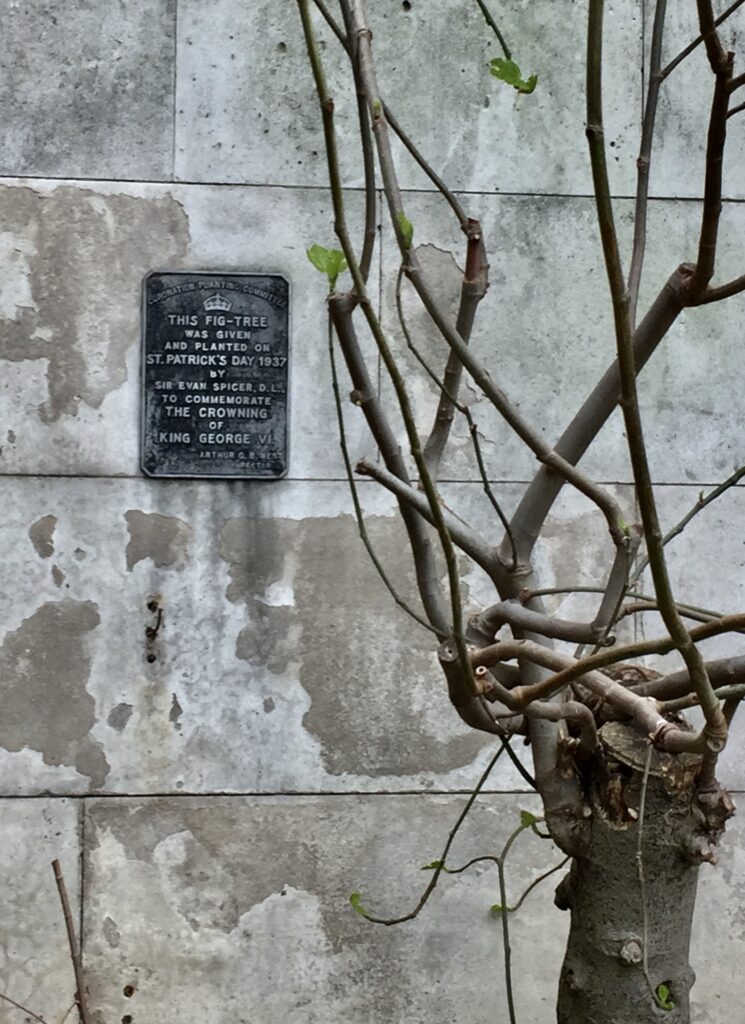
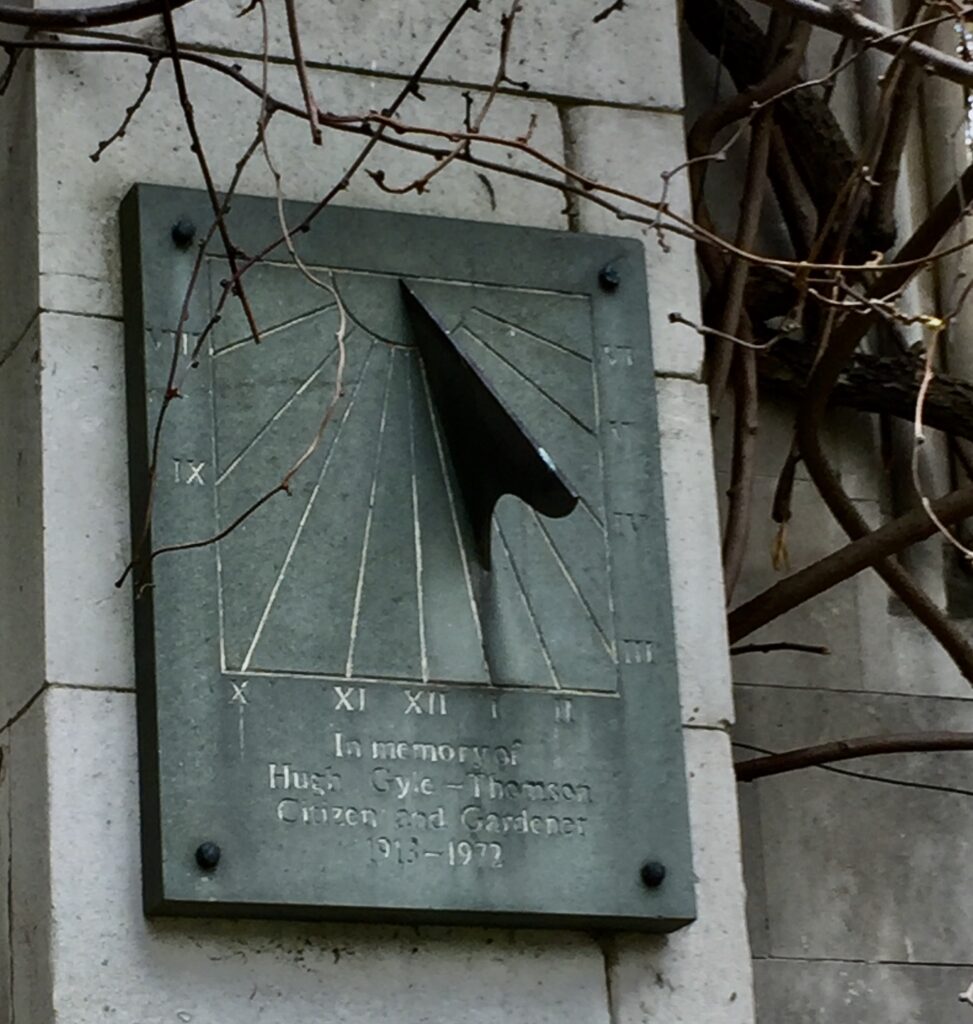
You can get an idea of the ferocity of Blitz fires from the scorch marks on some of the church’s stone walls. Incendiary bombs were dropped in conjunction with high explosives …
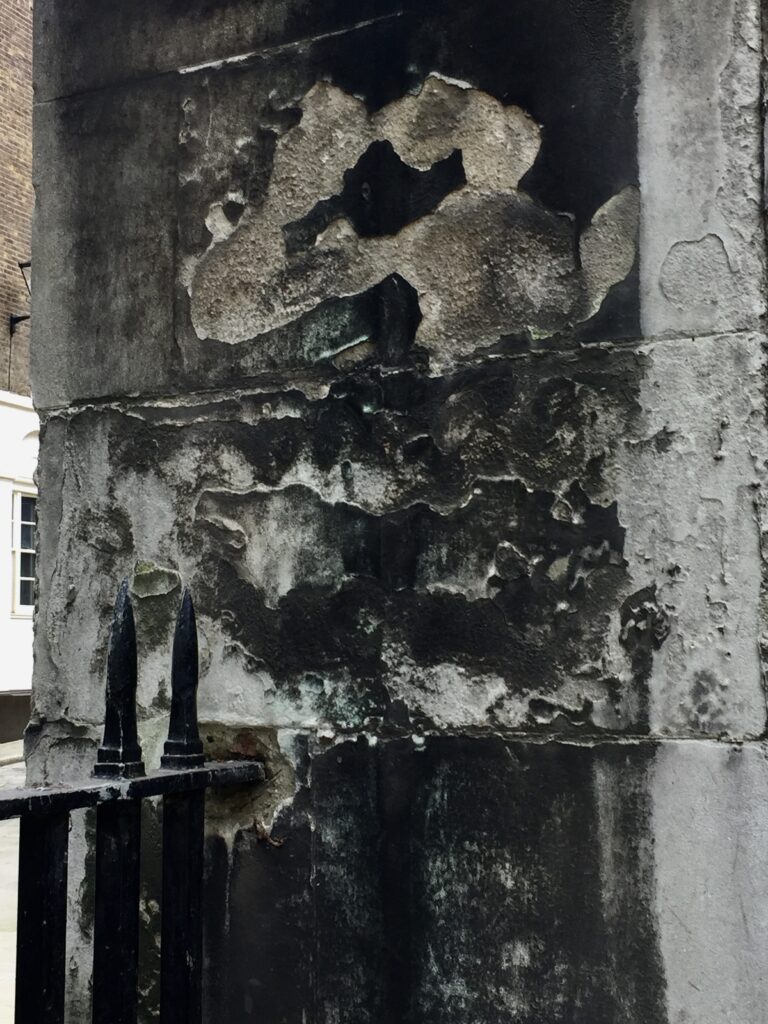
Three old headstones have survived with inscriptions that are partially legible along with a flatstone. I have identified them from the excellent audit of churchyard inscriptions carried out by Percy Rushen in 1911.
Here are the entries in Percy’s book :
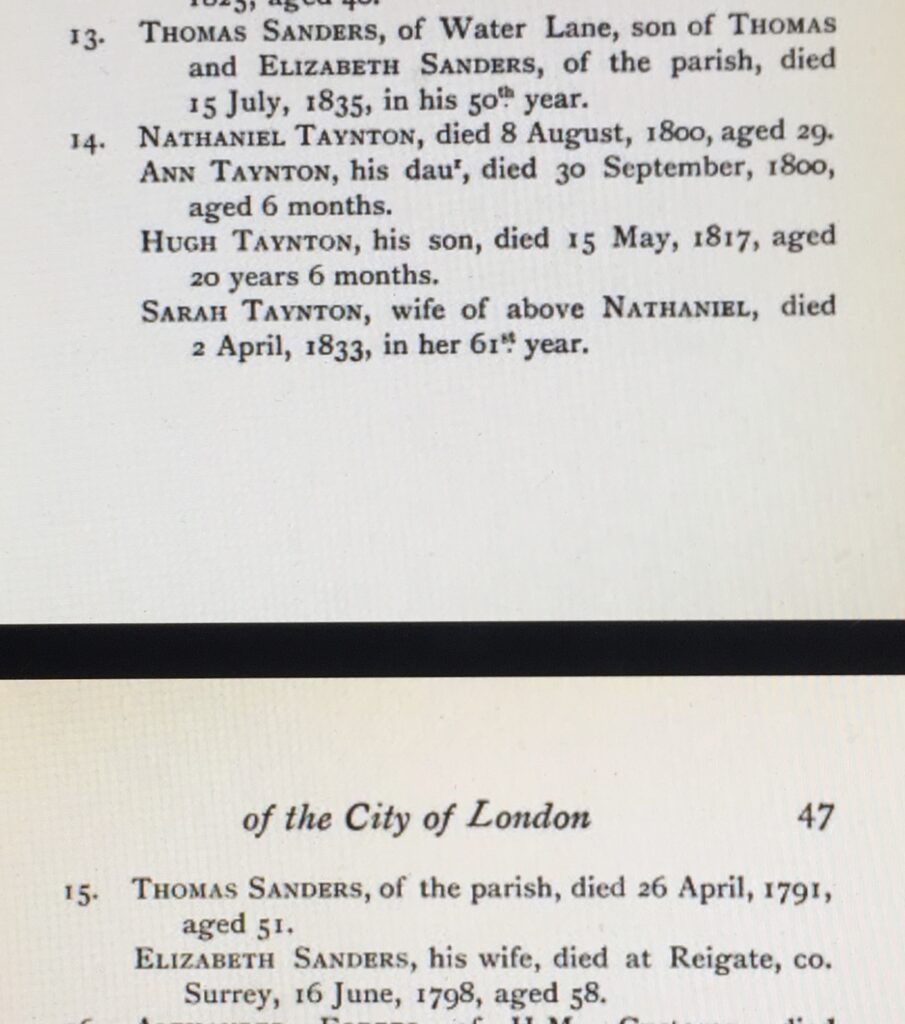
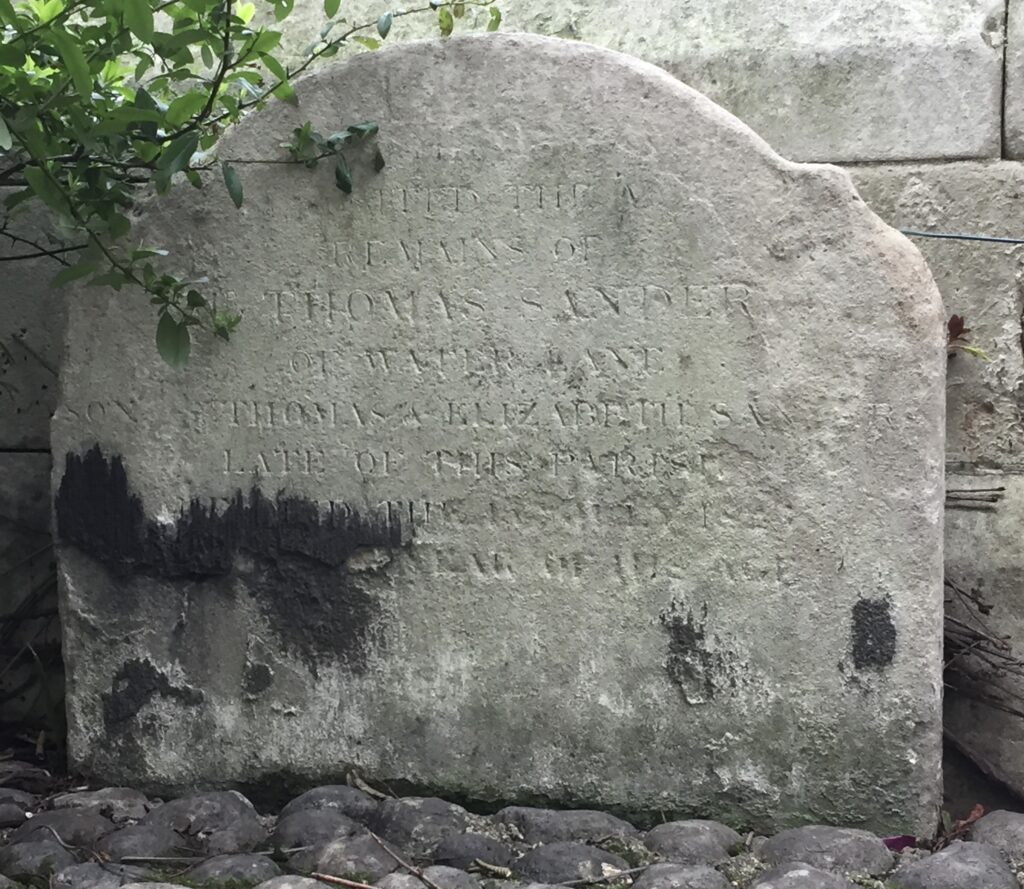
Then his mum and dad, Thomas and Elizabeth …
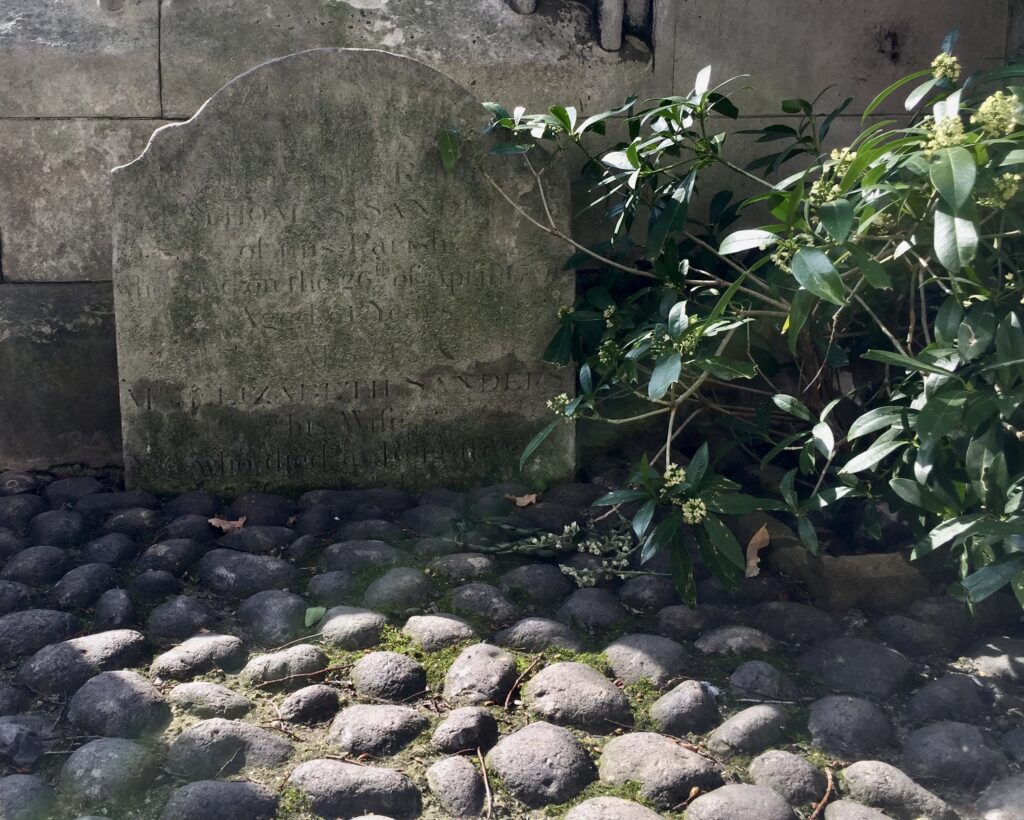
And then the Taynton family …
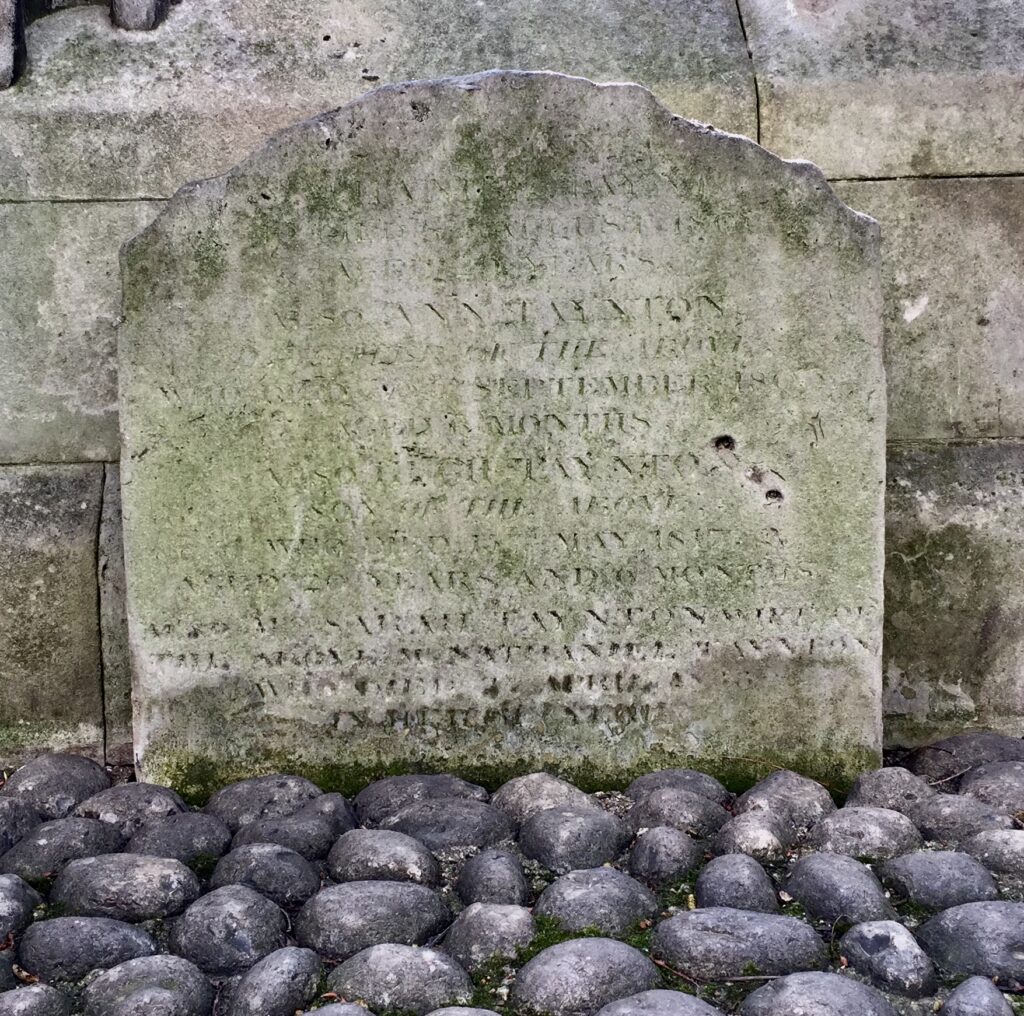
This is the flatstone, and I assume that it doesn’t appear in Percy’s audit because it was originally inside the church …
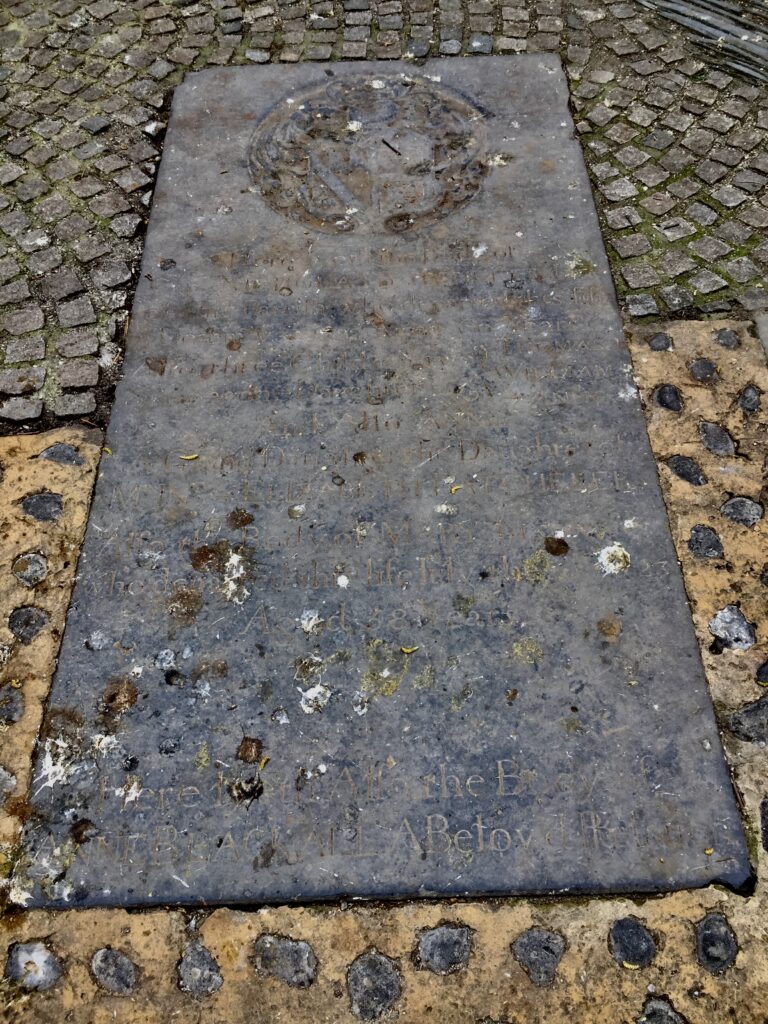
The pigeons and the weather have not been kind to it but I believe it reads as follows:
‘Here lies the body of Capt. NICHOLAS BATCHELER late of this parish who departed this life December 31st 1722 (possibly 1732) aged 60 years also three children, two sons one daughter, Thomas, William and Anne.
And also Anne a granddaughter of Elizabeth Batcheler.
Also the body of Mary his wife who departed this life July the 20th 1723 aged 58 years.
Also here lyeth the body of Anne Blackall a Beloved Relation.’
I have been able to identify most of the inscription because it appears in a lovely little film about the garden which you can access here on YouTube.
I find it very satisfying bringing these old stones to life and paying a kind of respect to their subjects, even though their mortal remains are long since gone.
If you would like to follow me on Instagram here is the link …
